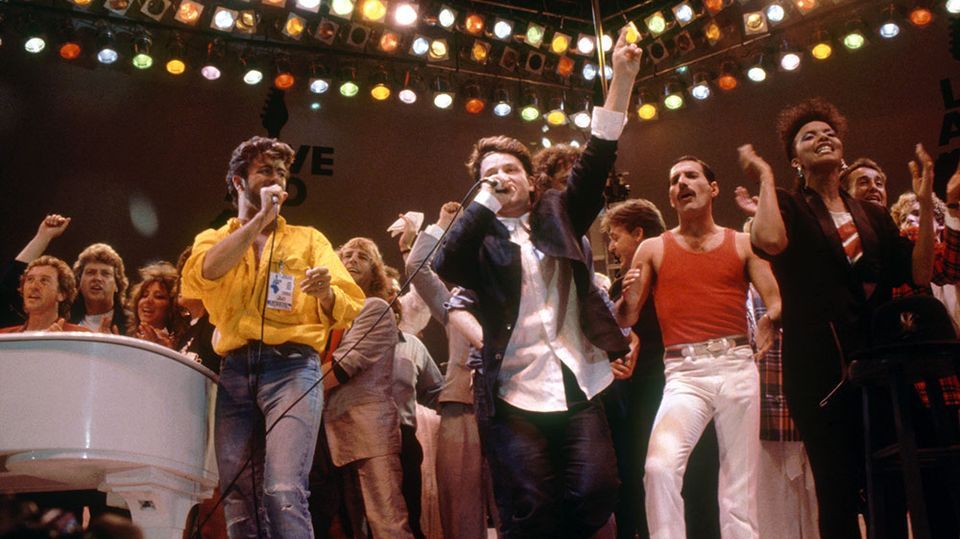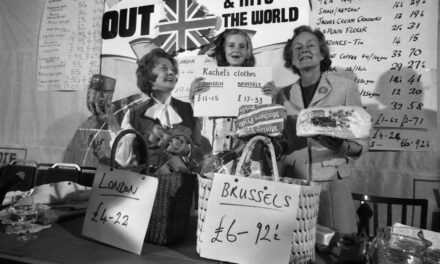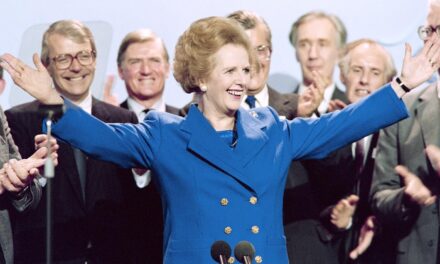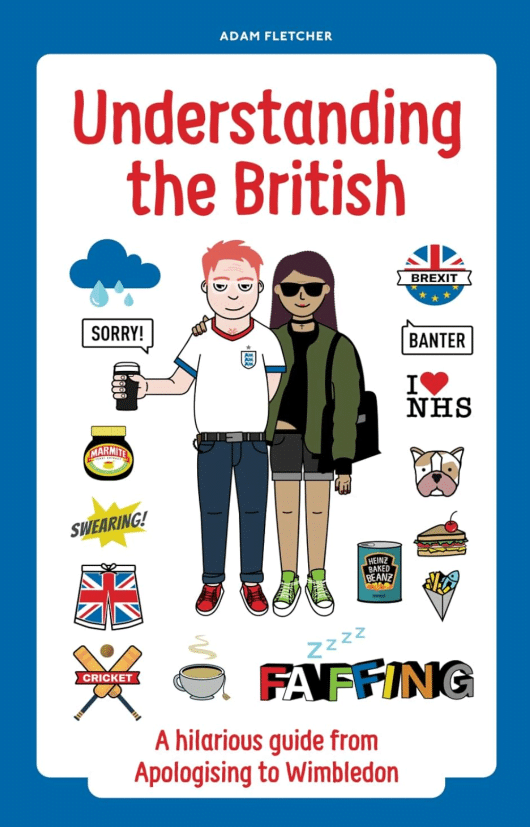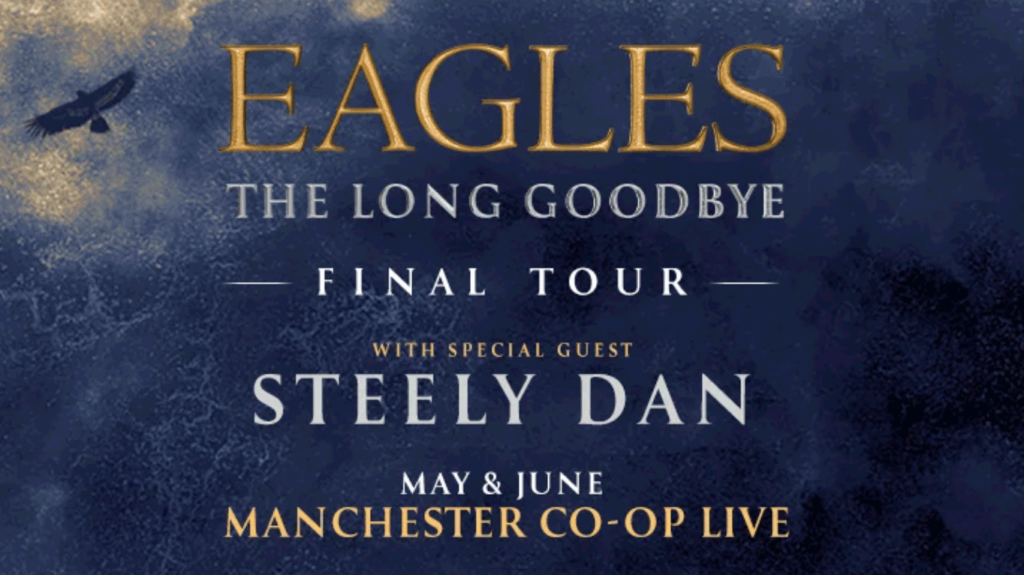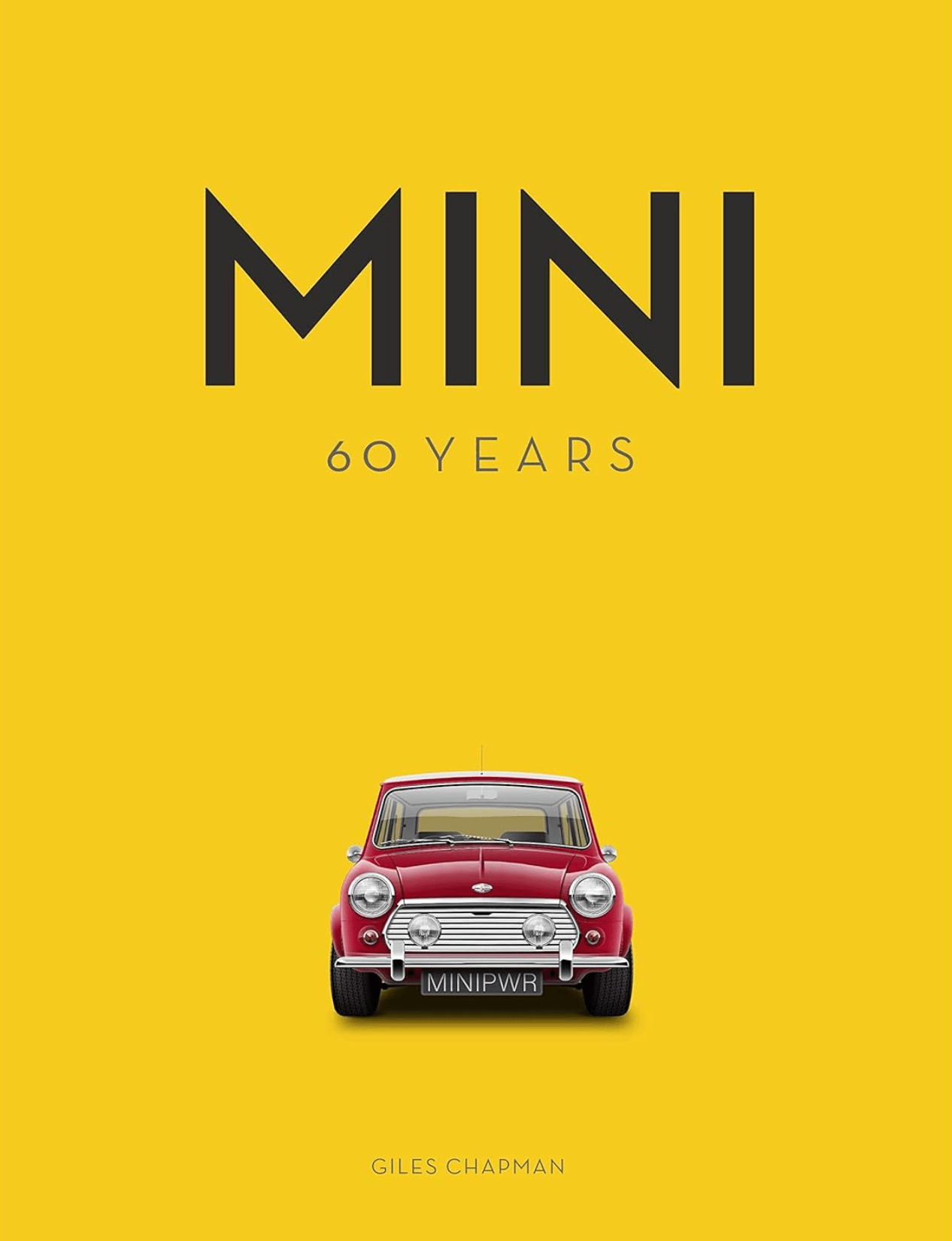The music of 1985 stands out for both its variety and excellence. As Britain endured ongoing economic and social divides under Margaret Thatcher’s conservative rule, music provided a cloak of creativity, escapism, and meaning. Revisiting the major songs of 1985 reveals a breadth of iconic acts at creative peaks, the development of groundbreaking videos, and a social commentary set to catchy synth beats. Synthesised dance-pop, slick funk, and powerful rock anthems, a unifying theme was British artists resonating globally while reflecting the diversity of UK culture. 1985 represented a pinnacle for UK music.

Gather round, my friends, and let me regale you with tales of the musical glory that was 1985. It was a time when Britain was in the throes of Thatcher’s iron rule, yet the country’s music scene refused to be shackled by austerity or social divides. No, these plucky lads and lasses channelled the era’s complexities into an outpouring of iconic tunes that shook the world to its core.
From synthesised dance-pop bangers to slick funk grooves and thunderous rock anthems, the songs of ’85 represented a delicious smorgasbord of sounds. Though the underlying thread was distinctly British talent reflecting the diversity of the UK’s rich culture. Mark my words, that year was the shining pinnacle for music on these fair isles – a time when nobody could resist the siren song emanating from Blighty.
So let’s have ourselves a laugh and take a whimsical trip back to when big hair, bigger riffs, and even bigger trousers reigned supreme. I’ll be your guide as we revisit these timeless classics, from the emotional gut-punches to the deliriously happy bops. Just try and resist the urge to dance like a loon in your living room.
Do you remember trying to solve the Rubik's cube whilst dressed in your He-Man pyjamas? Did you try to make 'cool' sound effects with your mouth like Jones from Police Academy? Or maybe you swooned over Scott and Charlene's (aka Jason and Kylie's) wedding of the year? If that sounds like you, there's no mistaking you were a child of the eighties. Rev up your DeLorean, switch on the Flux Capacitor and take a cruise back throguh the decade that made you the person you are today.
First up, we simply must pay our respects to ol’ Roland Orzabal and Tears for Fears’ magnum opus “Everybody Wants to Rule the World.” As the story goes, Roland was having a right deep chin-wag with some sage bloke in a London pub one rainy night. This tweed-jacketed philosopher got all existential about humanity’s endless lust for power and domination being our eternal downfall. Fair play to Roland, he soaked up those musings like a sponge and proceeded to pen one of the most sweeping, grandiose anthems known to mankind.
When the demo hit the ears of bandmate Curt Smith, the pair knew lightning had struck. Curt’s driving bass-lines and synth wizardry elevated the track to dizzying heights, perfectly capturing that universal desire for control with soaring vocal hooks. “Everybody Wants to Rule the World” encapsulated the decadence and unease of the 80s, yet still glimmered with idealistic hope that we puddings might one day rein in our ravenous egos. For Roland, it’ll forever be a rain-soaked reminder of that wise old boozer who kickstarted a true classic.
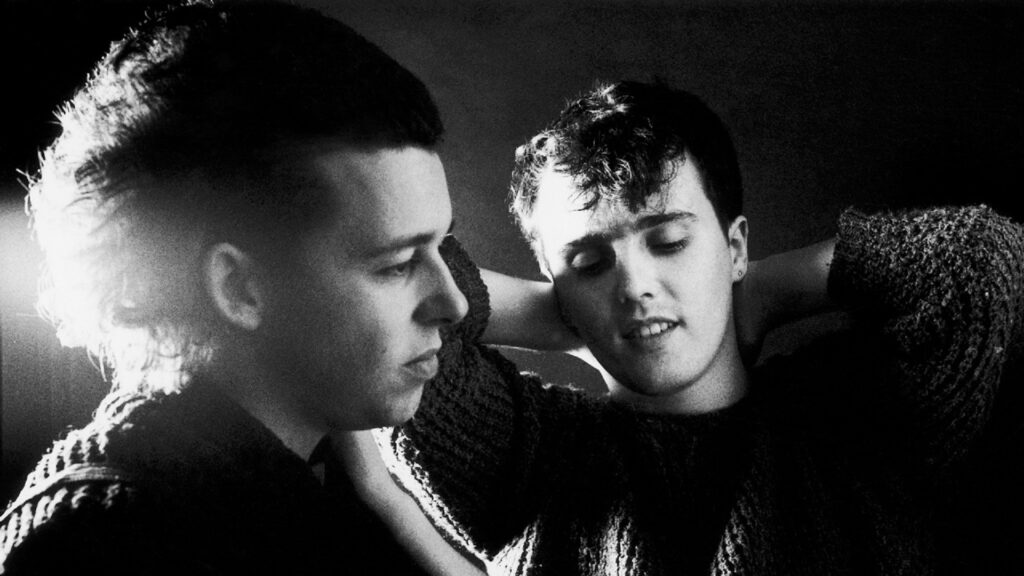
Speaking of iconic cinema, who could forget Simple Minds’ “Don’t You (Forget About Me)” – the beating heart of The Breakfast Club? Lead singer Jim Kerr’s brooding baritone captured the very essence of adolescent angst over those dramatic synth-rock riffs. It was an anthem of youthful longing and the burning desire to belong that lodged itself in the very soul of a generation.
Yet the true magic lay in Simple Minds’ ability to blend arty sensibilities with pure mainstream appeal. While the likes of moody art-rockers would turn green at Kerr’s raw, plaintive yearning, the unabashed pop hooks had the masses eating out of the band’s tartan palm. An impressive high-wire act, to be sure – walking the tightrope between angsty credibility and chart-conquering gold.
From the lofty emotional heights of teenage turmoil, we descend into the sophisticated world of the Pet Shop Boys and their cheeky 1984 smash “West End Girls.” Over a hip-hop-influenced groove and Neil Tennant’s ironic spoken vocals, we got a window into the era’s great cultural divide as the duo painted a vivid portrait of London’s haves and have-nots under Thatcherism.
Draped in that signature slick production and East-meets-West flair, “West End Girls” was both a razor-sharp satire and an undeniable dance-pop earworm rolled into one. The Boys deftly juggled socio-economic commentary with pure pop craft in a way only the Brits could pull off. While the stuffy elite tutted at such cheeky upstart antics, the common folk were throwing shapes on the dance floor, united in exuberant revelry. Vive la Pet Shop Boys!
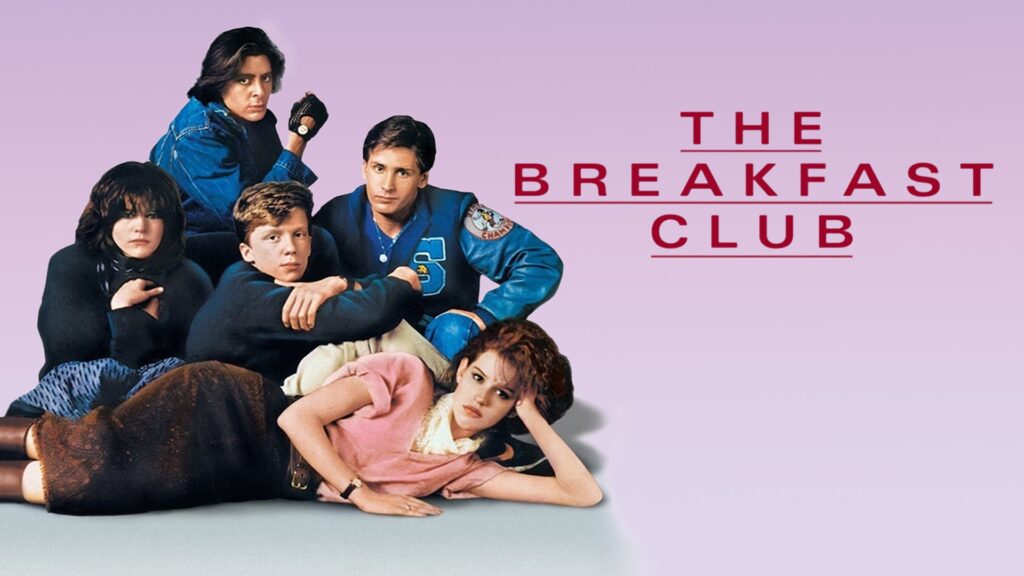
Of course, no retrospective of 1985’s biggest smashes would be complete without a nod to the Purple One himself. Yes, Prince had us partying like it was “1999” with his electrifying apocalyptic funk banger of the same name. Between those cryptic nuclear war references and the slap bass groove from the depths of Hades, you couldn’t help but succumb to the urge to live every night like Armageddon was on its way.
Leave it to Prince to take premillennial dread and turn it into a sweat-drenched celebration of life itself. When that “Mommy, why does everybody have a bomb?” sample hit, listeners were instantly transported to the heart of a Purple Rain-soaked orgy of musical hedonism. As cities burned and missiles flew overhead, those penetrating synths and that stratospheric vocal scream commanded you to shake your moneymaker with wild abandon. In Prince’s purple-tinted world, the only way to face oblivion was to go out dancing.
After basking in the warm, funky glow of impending doomsday, let’s all take a collective breath and get in our feelings for a bit, shall we? Anyone who survived the emotional wringers of adolescence has surely wept along to Foreigner’s bombastic power ballad “I Want to Know What Love Is.” From that celestial gospel-tinged intro to the full rock climax soaked in luscious reverb, this was a true tour de force of unapologetic sentimentality.
"Freddie Mercury: A Life, In His Own Words" is the nearest thing to Freddie’s autobiography as it is possible to achieve. A moving, witty, often irreverent collection of quotes (or interview transcript) from the man himself, covering an extraordinary life, meticulously edited together by Queen’s long time archivists, with a Foreword by Freddie's mum. An essential read not just for fans of Queen and their iconic frontman, but anyone intrigued to know more about one of music’s most endearing and enduring performers.
The beauty of this one lay in how Mick Jones’ raspy vocals turned simple longing into a universal lament that crashed over you in waves of searing emotional intensity. At the risk of sounding utterly sappy, “I Want to Know What Love Is” felt like someone had wrung out their very soul and pressed it into vinyl form. It’s the kind of song that could unite jaded loners and lovey-dovey couples alike under its vast emotional umbrella. No wonder it soundtracked countless drunken singalongs and emotionally charged personal epiphanies during the Reagan era. Here’s a tune guaranteed to instantly transform even the burliest bloke into a hopeless romantic heap.
If overwrought 80s balladry isn’t really your jam, let’s reset the mood with the wistful, bittersweet storytelling of Don Henley’s “The Boys of Summer.” Over understated, tastefully employed guitar noodling, the former Eagle frontman waxed poetic about a faded summer romance slowly retreating into the rearview mirror of nostalgia. Henley’s warm yet weary rasp ached with the weight of lives passing unnoticed while the good times and freedom of youth vanished far too quickly.
It’s a bittersweet antidote to all those songs that mythologize youth and coming-of-age tropes. “The Boys of Summer” is steeped in unavoidable melancholy, shining an introspective light on those oh-so-brief windows of unbridled joy before the harsh winds of adult responsibility come sweeping in. Yet for all its wistful musings, the song manages a strangely comforting quality – a reminder that we all carry priceless memories wherever the seasons of life take us next. The ultimate soundtrack for sunset reminiscences, misty-eyed recollections of idyllic days gone by.

Okay, enough soul-searching for now – let’s get back to unbridled pop euphoria! If you came of age in the UK in the 80s, there’s no way you can hear Feargal Sharkey’s “A Good Heart” without instantly being transported back to walking on sunshine in the spring of your youth. The former Undertones man captured hearts and charts alike by gracefully eschewing the artifice and decadence of so much 80s pop.
Over a tender piano backdrop, Sharkey employed his lilting Irish brogue to tenderly champion the virtues of faithful, enduring love. His dewy-eyed, sincere delivery encapsulated everything good and decent in the Thatcher-era world, a much-needed emotional palate cleanser amidst all that materialism and greed. In a decade filled to the brim with pop stars going to increasingly gaudy extremes for attention, Sharkey carved out his little niche of low-key, humble charm. For anyone who longed for a safe haven from all the spandex and hair spray happening elsewhere, “A Good Heart” beckoned like a welcoming candlelight on the windowsill.
How’s that for a tonal U-turn? Let’s get back to the good stuff with Madonna’s quintessential 80s grooveathon, “Into the Groove.” There’s a reason this hypnotically throbbing ode to the dance floor became Madge’s first number-one smash – those insidiously seductive synth lines and teasing vocal hooks burrow straight into the primal pleasure centres of your brain. Hit play and try not to get impossibly, irresistibly “INTO THE GROOVE”.
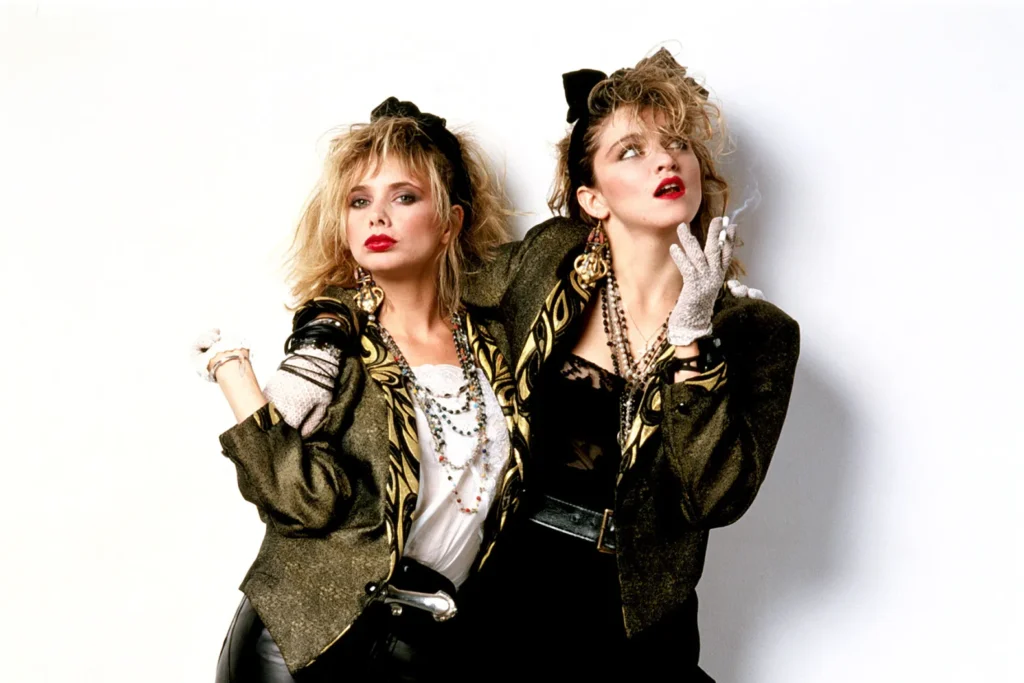
No mere mortal could resist that relentless beat egging them to cut loose and get footloose! While Madge always positioned herself as the mistress of media manipulation and high-concept artistic statements, “Into the Groove” was pure liquid disco nirvana, a place where she could just fixate on making the people move. Oh sure, there’s some lyrical winking about desire and coquettish flirtation tucked away amidst the rhythmic tsunami, but the enduring appeal lay in its sweaty euphoria. If you didn’t shed your inhibitions entirely and lose yourself on the floor to this one, you simply weren’t doing the 80s correctly.
From one UK pop juggernaut, we slide on over to the more slick, sophisticated funk stylings of Level 42 and their synth-bass masterclass “Something About You.” More than just a lesson in fretless bass virtuosity from the great Mark King, this groove vehicle also showcased the band’s ability to blend glossy pop hooks with deeply ingrained jazz chops in a way that had broader commercial appeal.
As King’s frisky, undulating bass-lines seduced you into a trance state, the impossibly tight horn arrangements and layered harmonies whisked you through a whirlwind of blissful instrumental ecstasy. “Something About You” exemplified Level 42’s musical duality as eggheads who could still get you grooving in the aisles. By striking that delicate balance between heady musicality and pure dancefloor pleasure, the band wormed their way into the hearts of discerning pop fans and happy-go-lucky movers alike. This was the kind of lushly produced, groove-centric sound that made Level 42 one of the 80s’ great unsung funk ensembles.

If we’re going to properly explore the dense sonic landscape of 1985, we’d be utterly remiss not to dive deep into the esoteric avant-garde realms of Kate Bush. Her towering opus “Running Up That Hill” managed to be both a stratospheric commercial crossover smash and a conceptual masterwork that expanded the boundaries of pop. Spurred on by the universal human desire for mutual understanding between lovers, Bush crafted a hauntingly introspective track steeped in rich, impressionistic imagery and complex metaphysical conceits.
While lesser artists might have gotten lost in such gnarled philosophical thickets, Bush’s ethereal, emotion-drenched vocals and the stark, widescreen production managed to convey profound emotional resonance amidst all that deep-thinking abstraction. “Running Up That Hill” unfolded like some vivid romantic dream – all lush textures, undulating rhythms, and lyrics that felt almost mythical in their grandeur. It’s sonic sorcery of the highest order, using the mainstream pop medium to explore the human psyche’s furthest reaches while miraculously remaining intensely listenable, even irresistibly catchy. Leave it to Kate to push the avant-garde envelope while still penning a downright smash.
While we’ve traversed into some lofty artistic territory with the wondrous Ms Bush, fear not – this romp through 1985’s biggest hits simply wouldn’t be complete without checking in with Mr Good-Time Party Dude himself, Bryan Adams. With the nostalgic kick of “Summer of ’69,” the raspy-voiced Canadian rocker turned the clock back and gave voice to every warm-weather adolescent fantasy we all cherish deep down.
Cruising seamlessly from the opening riffs, Adams painted a vivid, instantly relatable picture of youthful innocence, first loves, and hastily thrown-together bands channelling the sonic gods of the classic rock pantheon. If “Born in the USA” caused some Springsteen fans to raise a suspicious eyebrow at its lyrical ambiguity, “Summer of 69” was pure, grinning adolescent wish fulfilment from beginning to end. This was Adams at his most light-hearted and charismatic, reminding us all how intoxicating those first brush strokes of youth can be when you’re up and chasing your dreams with a bunch of mates – no cares in the world beyond pleasing the rock gods and finding someone to smooch in the backseat after the show.

Alas, even the most blissed-out summer daze must inevitably end. Thankfully, we have Phil Collins and Philip Bailey’s slinky R&B crossover smash “Easy Lover” to serve as the perfect soundtrack for subsequent grown-up romances. Coming together in a glorious meeting of Phil’s everyman charm and Bailey’s stratospheric vocal virtuosity, the duo crafted an instantly legendary blue-eyed soul moment straight out of a deliciously retro romantic fantasy.
As Collins’ shuffling rhythms and Bailey’s impossibly silky vocal runs enveloped you in a lovers’ embrace, the track elevated the art of the smooth seduction anthem to soaring new heights. “Easy Lover” was pure escapist pleasure – the kind of slick, satin-sheet jam that could simultaneously transport you into a world of uptown sophistication while still providing a hell of a sexy vibe for those private boudoir moments. Listening to it now, you can practically envision the mood lighting and billowing curtains. Phil and Philip weren’t shy about laying it on thick, but dammit if their collaborative chemistry didn’t make you believe in the power of lovemaking all over again.
Speaking of good vibrations and the eternal allure of seductive pop magic, we’d be dead wrong to ignore The Cars’ quintessential slice of melancholy synth-rock, “Drive.” Guided by Ric Ocasek’s trademark emotive baritones, the track materialised as some phantom spectre summoned forth from between the dimly lit streets of a neon-drenched nocturnal cityscape.
From the gossamer synth textures to the hollow, ambient production giving Ocasek’s voice an ethereal glow, “Drive” lured you into its introspective orbit and soaked you in a downcast urban malaise. Yet even as it oozed with loneliness and lost connections, the whole song throbbed with a palpable, cinematic romantic tension. You could practically feel the acceleration of a sleek midnight cruiser racing through deserted alleyways in search of some elusive human connection. While offering little in the way of narrative specifics, “Drive” still effortlessly captured that uniquely hollow, melancholy state of modern longing and displacement. It seethed with existential ennui, yet maintained an oddly hypnotic, even alluringly moody mystique. The Cars had a real knack for crafting inscrutable rock gems, and “Drive” may well be their most sustained bout of moody, atmospheric mastery.

Okay, enough simmering in the vaporous post-punk vibes – let’s get back to pure, unadulterated rapture! If you didn’t shamelessly bust a move to the Eurythmics’ “There Must Be An Angel (Playing with My Heart),” you basically weren’t living your best life in 1985. This sweeping, gospel-tinged slice of pop grandeur found Annie Lennox and Dave Stewart at their most deliriously crowd-pleasing, throwing down a heavenly storm of exuberant synth-pop catharsis.
Lennox’s heavenly incantations soared to the heavens over surging tides of cinematic strings and guitars, creating that quintessential 80s feeling of being transported to some idyllic emotional plane of romantic fantasy. The lyrics were pure storybook mysticism, a love-stoned reverie that built to delicious crescendos of release, only to simmer down and do it all over again in euphoric waves. “There Must Be an Angel” was the musical equivalent of an IMAX romance, lathering the senses in lush, theatrical rapture. While the Eurythmics were never afraid to embrace the dark, paranoid side of humanity at times, this one was all about channelling the light – an outsized affirmation of romance and surrendering to life’s sweeter instincts. To hear it was to lose yourself in full-on blissed-out swoon ecstasy.
My goodness, all this talk of angels and ecstatic swoons and waves of melodic rapture has me feeling a bit…delicate. How’s about we reset with some rollicking experimental grooves, eh? Enter Paul Hardcastle and his brilliant, sample-driven meditation on the Vietnam War, “19.”
Seamlessly blending propulsive synth rhythms with haunting audio snippets of news reports and military statistics, Hardcastle crafted something that managed to be both a certifiable dance-floor filler and a searing anti-war statement. Amidst all the throbbing, kinetic momentum, those jarring real-world samples hit like a sobering moral wake-up call. One minute, you’re grooving blissfully to the infectious beat, the next you’re being confronted with the grim human toll and trauma of armed conflict.
It was a bold, uncompromising artistic move that could have easily fallen flat, yet “19” emerged as one of 1985’s definitive works – sonically innovative and deeply resonant. Hardcastle’s pioneering use of sampling and his marriage of social consciousness with club-ready grooves set a new precedent for what pop music could achieve in the increasingly technological age. This wasn’t just a dance track, it was a startlingly vivid oral history lesson integrated seamlessly into the rhythm and flow. Decades later, “19” still has the power to uplift and disturb in equal measure.
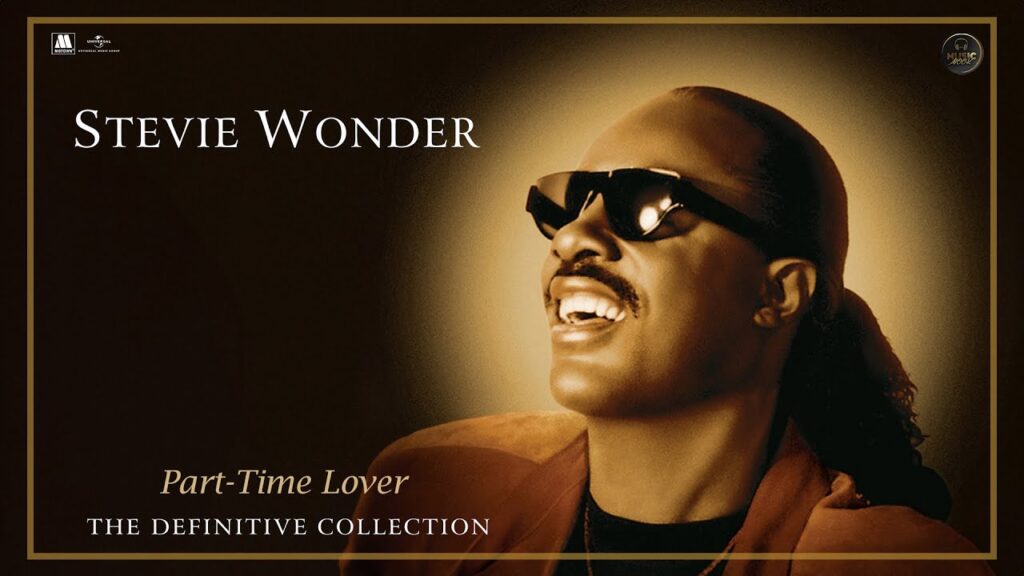
From Paul Hardcastle’s searing sociopolitical hybrid, we groove on over to Stevie Wonder and his sly, tongue-in-cheek classic “Part-Time Lover.” If anyone could make juggling a harem of romantic partners sound downright charming and playful, it was the funky genius of Steveland.
Over an irresistible shuffle of syncopated rhythms and Wonder’s signature harmonica licks, the man winkingly spins tales of his scattered schedule of romantic dalliances. Yet there’s no seediness or disrespect to be found – just that unmistakable Wonder charisma and knack for deft comedic storytelling making this potentially dicey premise feel like an all’s fair romantic romp. He casts himself as the suave, good-natured player spinning plates, guided by nothing more than a zest for life and a desire to spread the love around like an incorrigible Casanova.
Of course, this being Stevie freakin’ Wonder, even a frivolous ode to debauchery is executed with immense melodic craft and instrumental verve. “Part-Time Lover” is an irresistible slice of effervescent, butter-smooth funk that demands to be consumed in a state of pure blissful reverie. It’s carefree, lascivious, and utterly joyful all at once – a signature Wonder moment of transforming even the most morally questionable scenario into something that just makes you grin from ear to ear. The man was a wizard when it came to this sort of good-natured ribaldry, and “Part-Time Lover” remains one of his most impishly delightful compositions.
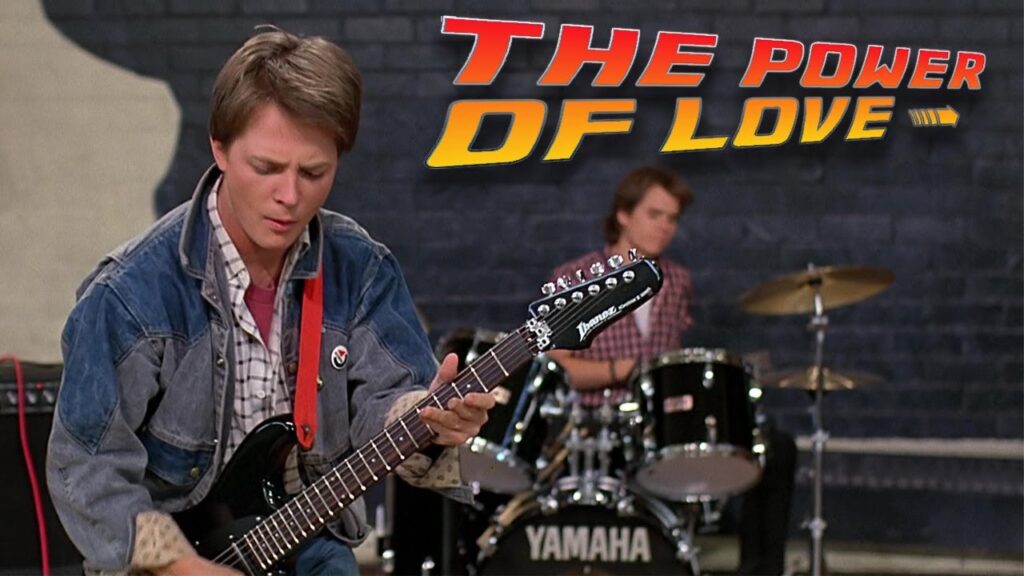
From the amorous antics of the Stevie Wonder playbook, we transition to one of the most towering, audience-unifying pop/rock juggernauts of the 80s – Huey Lewis and The News’ classic “The Power of Love.” I defy anyone, regardless of age, background, or general music snobbery levels, to not get at least a little misty-eyed and sentimental at those iconic opening piano refrains.
The quintessential thematic centrepiece of that cinematic time-travelling romp Back to the Future, “The Power of Love” was Huey and the lads firmly staking their claim for arena-anthem supremacy. From the moment Lewis’ unmistakable rasp takes centre stage amidst the surging tide of synths and electric guitars, the whole thing just elevates into the stratosphere of shamelessly rousing, fists-in-the-air musical rapture.
On paper, the lyrics veer perilously close to bland romantic platitudes about love’s ability to transcend the boundaries of space and time. But the genius lies in the borderline-campy levels of unabashed passion and sheer sonic muscularity on display. Irony and subversion get tossed out the window as Lewis and his cohorts fully commit to transforming saccharine sentiment into a bona fide musical endurance test of the heart. With soaring harmonic runs and lyrical refrains that just beg for drunken mass sing-alongs, “The Power of Love” is an outrageously effective gospel-tinged juggernaut crying out to be unleashed within the hallowed walls of arenas worldwide. Leave it to those beloved purveyors of blue-collar American rock to turn what could have been throwaway pop fluff into a certifiable emotional tour de force.
'I went to a lot of trouble to create Boy George and then I went through a whole battle for years about not wanting to be him. But now I enjoy and embrace it in a way that I wasn't able to as a young person.... I'm finally learning to be George Alan O'Dowd from Eltham.'
Karma is the definitive autobiography from the incomparable Grammy, Brit and Ivor Novello award-winning lead singer of Culture Club and LGBTQ+ vanguard: Boy George. Told in his inimitable style, Karma tells the story of the charismatic frontman - the drama, the music, his journey of addiction and recovery, surviving prison, meeting legends like David Bowie, Prince and Madonna, and the highs and lows of a life lived in the spotlight and in the headlines.
Fresh off witnessing the sheer anthemic power of Huey Lewis and his emotionally aerobic “Power of Love” sonic boom. Let’s change gears slightly and pay our respects to the iconic Tina Turner and her gleefully defiant rock banger “We Don’t Need Another Hero.”
Recorded for that wacky post-apocalyptic Mel Gibson vehicle Mad Max: Beyond Thunderdome, Tina’s entrance into the hermetically sealed 80s movie soundtrack pantheon was nothing short of a volcanic eruption of primal rock energy. From those opening bluesy guitar licks, you just knew the Queen of Rock was about to lay waste to any preconceived notions of subtlety or restraint.
Tina’s scorched-earth vocal workout was a true tour-de-force – an unapologetic declaration of self-reliance and the refusal to be pigeonholed by society’s expectations. With each sandblasted wail and rapid-fire lyrical uppercut, she staked her claim as a force of nature unbowed in the face of an increasingly conformist cultural landscape. “We Don’t Need Another Hero” was a rallying cry for the perpetually disenchanted – a full-throated rebuke of the era’s obsession with easily digestible iconography and the endless parade of rebel idols to mindlessly worship.
Yet within Turner’s spirited rejection of such idolatry lay the greater truth that she herself was carving out an indelible place as one of the most heroically iconic figures of the decade. Even in her self-proclaimed abnegation of “heroes,” Tina was basically announcing her own peerless badassery in the most thunderous way possible. It was a deliciously self-contradictory conceit that only she could pull off with such swaggering conviction.
Like all of Turner’s greatest works, “We Don’t Need Another Hero” crackled with the raw energy and uncompromising attitude that made her such a transcendent artistic force in the 80s. As the clouds of hairspray fumes dissipated, her unbridled vocal power and streetwise, plainspoken authenticity claimed the decade’s pop culture throne. She took no prisoners, brooked no dissent, and engraved her name in the pantheon of all-time greats in the process. Even three decades later, this track remains the quintessential Tina Turner statement piece – big, brash, and eminently heroic in its defiant self-belief.

On the complete other end of the pop music spectrum from Tina’s sandblasted vocals and monolithic rock stomp, we find Bryan Ferry luxuriating in the velvet-lined confines of “Slave to Love.” The ex-Roxy Music crooner conjured up a lush, thoroughly debauched pop fantasia with this quintessential slow jam for the martini-swilling sophisticate in us all.
From the opening seconds of Ferry’s unmistakable baritone gliding across a shimmering synthetic soundscape, you’re instantly transported to some dimly lit, wood-paneled lounge where elegant debauchery hangs thick in the air. The whole vibe reeks of high-thread-count indulgence – the very embodiment of the Decade of Excess’s overriding mating call for opulence, worldly gratification, and unbridled hedonism.
And who better to serve as the consummate avatar of such louche lyrical daydreaming than Bryan Ferry himself? The man was born to ooze louche, narcotised cool from every pore as a sensual sonic siren luring listeners into an impossibly chic romantic fantasy. You can practically envision him draped across a fainting couch, silk robe artfully askew as he lovingly lathers on the sordid romantic details that rendered “Slave to Love” such an instant object of pop culture fetishisation.
Unlike the vast majority of his 80s contemporaries, Ferry didn’t feel the need to dress up his preoccupations with affairs of the boudoir in any sort of coy euphemistic garb. No, this was unabashed, full-frontal lyricism about the intoxicating power of sexual allure and the willingness to freely submit to one’s carnal urges. From the chap’s gloriously louche perspective, there was absolutely no shame in being a “slave to love’s insisting” – merely an acknowledgement of the primal forces that guide us all at some level. That frank, open sensuality, coupled with the impeccable production polish, ferry brought to the table, transformed “Slave to Love” into a universally beloved anthem for the inveterate bon vivant among us. No other Pop song better encapsulated that sleazy yet strangely refined 80s jet-set spirit.

Of course, you can’t properly discuss the sensual siren songs of 1985 without giving centre stage to smooth operator Bryan Adams. Few tracks captured the longing romantic soul better than the man’s iconic power ballad “Run to You.” Over a steady propulsive chug of electric guitars, pianos and Adams’ trademark ravaged vocal rasp, the open-hearted rocker spun a tale of pining for a lost love as vivid as it was painfully relatable.
Part of what made “Run to You” such an indelible favourite was the sheer unpretentious sincerity Adams brought to the performance. This was a guy incapable of ironic detachment when it came to affairs of the heart – he sold every lovelorn lyric and simmering hook like he was that guy, desperately hoping to somehow rekindle the dying embers of a faded romance. No emotional stone was left unturned, no gut-punching turn of anguished phrase undelivered. The man laid it all on the line with a disarming honesty and street-level swagger.
Yet for all its raw-boned candour and deliciously relatable romantic flailing, the true towering achievement lies in Adams’ masterful grasp of craft and pure pop universality. “Run to You” managed to miraculously encapsulate that most elusive of songwriter’s grails – taking a highly specific personal narrative and rendering it as an incredibly infectious, shamelessly crowd-pleasing anthem for the lovelorn of all stripes. Give the guy credit, from those shimmering synth textures to the epic, arena-ready guitar runs to that unmistakable Adams rumbling yowl punching you square in the chest, he fully understood how to pluck those heartstrings into the stratosphere.
For anyone who has ever experienced the slings and arrows of unrequited love, “Run to You” endures as a quintessential getting-your-shit-back-together power move. Adams is there leading the charge, a battering ram of hope and resilience at the ready, for anyone looking to soldier on after romantic calamity. I dare you to crank this one up in the aftermath of your latest heartbreak and not feel at least a tinge of your fighting spirit returning. The man was operating at peak inspirational power on this one.

Shifting gears wildly, it’s time we swivelled back towards the slick, sardonic grooves of new wave’s resident smart-asses, Dire Straits. Yes kids, when it came to lampooning the excesses of the music industry elite, nobody dropkicked self-importance in the goolies quite as mercilessly as Mark Knopfler and Co. with their immortal “Money for Nothing.”
Like so many of the biggest hits of the 1980s, “Money for Nothing” emerged from a collision between old and new – more specifically, working stiff cynicism and open mockery of the vacuous self-absorption sweeping MTV’s wall-to-wall music video parade. Over those unforgettable, dive-bombing synth riffs and Knopfler’s sinewy unforced guitar mastery, the song served as one big raised middle finger to the ludicrous pageantry of excess and preening that the music world was rapidly descending into.
As Knopfler narrated a construction worker’s dismay at today’s outlandishly materialistic music “superstars” with his trademark detached, darkly humorous sneer, a cultural touchstone was born. The irony-steeped satire played out with gleeful perversity over those hyperactive, futurist grooves and endlessly quotable “Money for nothin’ and chicks for free” refrains. You couldn’t help but revel in Dire Straits’ mischievously lowbrow snipping at the self-important rockstar establishment. It was the decade’s quintessential us vs them moment for the working-class listener as they embraced heroes who stuck it to the era of glitz, ego, and questionably fashionable music video choreography.
Plus, you had those now-iconic computer animated sequences paving the way for the music video format’s next mind-blowing renaissance. On every level, “Money for Nothing” epitomised that delicious early-mid 80s sweet spot where pop culture, technology, and socioeconomic commentary aligned into the perfect storm of both infectious grooves and penetrating cultural commentary. Mark Knopfler and his merry band of discontents were the bards of withering assessment as they delivered tongue-in-cheek musical genius to the unsuspecting masses.

Now I don’t know about you, but after basking in the sublime irritation of Dire Straits’ incisive social lampooning, I find myself in desperate need of an empowering, fist-pumping emotional pick-me-up. To rekindle those crucial life forces, we can do no better than to pay heed to the inimitable vocal power of the magnificent Bonnie Tyler and her stratospheric pop behemoth “Holding Out for a Hero.”
From those unforgettable opening synth stabs, Tyler’s immortal vocal cords are put on full, glorious display as she works herself into an impassioned frenzy. The driving synth-rock groove and Tyler’s instantly iconic “where have all the good men gone and where are all the gods?” wails make for one of the most spellbindingly cathartic musical experiences of the entire decade. I defy anyone’s endorphins and deepest yearnings for romantic idealism to not get jolted back to a rhetorical fighting shape under the sheer emotive tractor beam of this song.
Tyler tapped into the universal human desire for a soulmate so pure, so heroic, so capable of shaking our very beings to the core that hearing her give a full-throated voice to that longing proves nothing short of spiritually invigorating. From the simmering opening verses, Tyler injected the lyrics with a palpable sense of romantic yearning and vulnerability. Yet when she reached those anthemic, roof-raising choruses, bellowing “I need a hero!” at the top of her lungs, the whole thing transformed into a full-throated declaration of self-empowerment and a refusal to settle for anything less than the ideal partner.
Tyler’s ability to channel both the gentle intimacy of romantic longing and the bold, defiant confidence of knowing one’s own worth into a single cohesive performance is what made “Holding Out for a Hero” such a transcendent pop moment. This wasn’t just a love song, it was a rallying cry for anyone who refused to lower their standards when it came to forging a meaningful intimate connection.
In the landscape of 80s pop, dominated by so many synthetic pleasures and superficial distractions, “Holding Out for a Hero” resonated as a grounding, emotionally honest statement. It was a reminder to its listeners that no matter how frivolous things may seem, that core human yearning for authentic emotional fulfilment never goes away. Bonnie Tyler’s iconic vocals ensured those sentiments would stick in the hearts and minds of audiences for decades to come.
In his own words is the candid, witty, and unvarnished story of the songs and shows, the hits and pans, the marriages and divorces, the ascents to the top of the charts and into the tabloid headlines.
As one of only three musicians to sell over 100 million records both in a group and as a solo artist, Collins breathes rare air, but he has never lost his talent for crafting songs that touch listeners around the globe.
Speaking of iconic vocals that captured the spirit of an era, any retrospective of 1985’s biggest hits would be sorely lacking without acknowledging the massive success of UB40’s reggae-tinged cover of “I Got You Babe.” The original Sonny & Cher version was a quintessential 60s pop confection, but the British band’s updated take transformed it into something deeper and more poignant.
Reimagining the song as a lush, serenely beautiful duet of Ali Campbell’s and Chrissie Hynde’s soulful vocals, “I Got You Babe” became a reggae serenade to the power of love, devotion, and vulnerability between partners. The layers of lilting harmonies and mellow instrumental grooves gave the lyrics an understated emotional resonance that the original lacked. It was a soothing, uplifting invitation to revel in the beauty of human connection and intimacy.
What made UB40’s version so special was how they maintained the singalong appeal of the Sonny & Cher rendition while infusing it with a deeper sense of emotional wisdom and maturity. The reggae stylings, with their laid-back insistence, imbued “I Got You Babe” with a newfound sense of resilience – as if love, when truly cherished and nurtured, can transcended any obstacle or insecurity. It’s an undeniably feel-good song, but also one that seems to understand the work and faith required to sustain a profound romantic bond.

From that poignant, comforting vibe, we can transition to the atmospheric melancholy and metaphysical pondering of U2’s “The Unforgettable Fire.” Inspired by a visit to Japanese peace memorials, the song’s brooding poetry and Bono’s aching vocal delivery captured the fraught emotional state of coming to terms with grief, injustice, and loss on a universal scale.
Swelling and ebbing in waves of guitar-driven drama and introspection, “The Unforgettable Fire” gave voice to that profound sense of existential reckoning we all experience at some point in our lives. The cosmic resonance of its yearning refrain – “I can’t, I can’t, I can’t unlove you” – spoke to timeless human truths about the bonds between people that survive beyond the physical plane. U2 had a knack for grounding high-flown lyrical conceits in raw, tangible emotional truths, and “The Unforgettable Fire” found them plumbing the aching depths of the human soul.
In the way, this track, and honestly most of U2’s biggest hits, balanced intellect and heart, big sweeping gestures and whispered intimacies, cosmically-scaled themes and personal confessions, they demonstrated a preternatural ability to reconcile all the messy contradictions and conflicting perspectives of the human experience into a majestic, unifying whole. So while “The Unforgettable Fire” ostensibly explored the trauma of Hiroshima and the legacies of human conflict, its ultimate power lies in Bono’s ability to tap into the deepest universal wellspring of our shared hunger for love, belonging, and collective transcendence.
That fusion of grand ambition and profound humanism resonated massively in 1985, amidst all that era’s chaotic confluence of Cold War tensions, yuppie greed, rockstar posturing, and encroaching societal divisions. U2 just seemed to cut right through all those distractions and get straight to the messy, complicated core of what it meant to hope, dream, fear, and carry on breathing as a flawed human being navigating the world as best they could.
So while “The Unforgettable Fire” is a gut-punch of a song, with its moody minor-key trudge and images of scorched anguish, you never feel like the band is dragging you down into an abyss of true despair. Even in his most melancholic moments, Bono can still locate that defiantly redemptive spark to cling to. Which is why, in a decade where so many artists seemed compelled to amp up the darkness in pursuit of more emotional authenticity, U2’s output still managed to offer some sense of cathartic uplift amidst all the brooding introspection.

Let’s keep the nostalgic vibes rolling with The Waterboys and their anthemic 1985 classic “The Whole of the Moon.” This soaring, piano-driven beauty found Mike Scott and his merry band of Celtic rock troubadours in full revelatory flight, conjuring up vivid poetic imagery and tapping into that universal feeling of awe and inspiration.
From those opening piano refrains that swell with a sense of cathedral-shaking grandeur, Scott’s vocals entrance the listener with allusions to mystic visions and humanity’s endless capacity for transcendent creation. It’s pure widescreen emotionalism, each lyrical turn evoking a fresh profundity as the track builds towards multiple climaxes of life-affirming rapture. By the time those famous “I pictured a rainbow, you held it in your hands” refrains kick in, you’re utterly ensorcelled by The Waterboys’ impassioned folk-rock sermonising.
“The Whole of the Moon” is a work of supreme musicality and unbridled ambition channeled into a hugely infectious, almost liturgical sing-along. For all its literary grand-standing and reach-for-the-rafters vocals, the track remains grounded in an everyman’s vernacular lyricism and blue-collar appreciation for life’s small wonders. It’s epic balladry of the highest order, filtered through the sensibilities of the pub-lined Celtic soul.
No wonder it resonated so massively, becoming one of the band’s definitive mainstream breakthroughs. In its sprawling melodies and elemental emotional wallop, “The Whole of the Moon” reached a universality that transcended any perceived cultural divides or trends of the moment. This was grassroots ecstasy rendered larger than life through sheer creative verve.
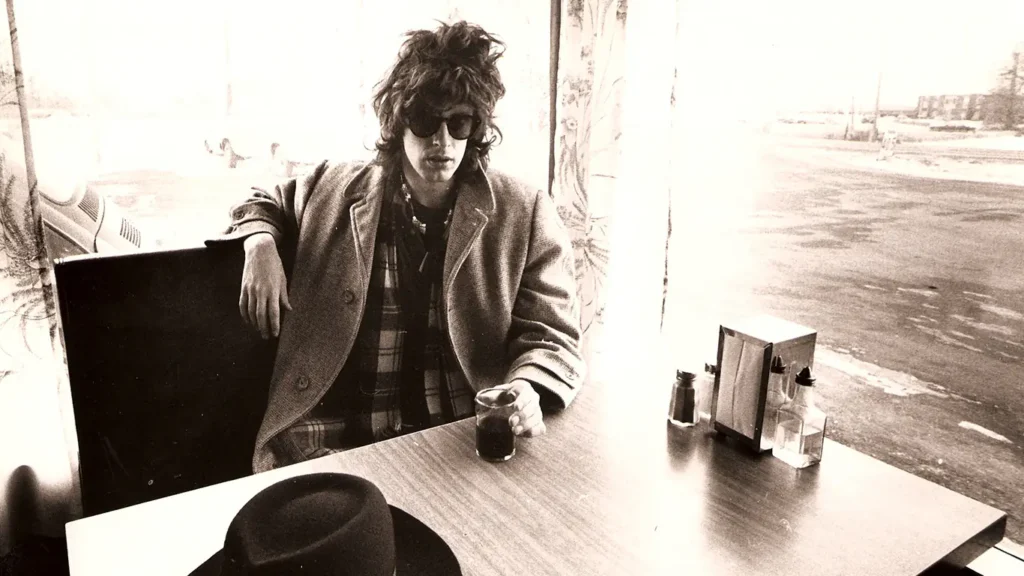
From one of 1985’s most galvanising emotional juggernauts, we transition to something…well, a bit more unabashedly bombastic and id-driven. I’m talking, of course, about Starship’s raucous arena-metal, disco throw-down “We Built This City.” Resurrecting the glory days of white wine-fuelled 1970s rock shamanism, the Grace Slick-led anthem arrived as a brash retort to the decade’s sleek synth-pop insurgency.
With its pummelling tom-tom fusillade and Slick’s unmistakable banshee wail sneering out defiant odes to the glory days of rock n’ roll hedonism, “We Built This City” played like the ultimate Reagan-era rallying cry for the denim-clad faithful. This was music to crack beers and pump fists to, damn the contemporary trappings and ironic detachment of the current youth culture. Slick and her cohorts embodied the unbridled excess and unironic bravado of the previous decade, daring you to look away from their regalia of Spandex, lasciviously windmilling locks, and unrestrained aural demolition.
Subtlety and nuance were in short supply on this gloriously overblown and ham-fisted slab of riff-worshipping meat ‘n’ taters rock. But that was kind of the point – “We Built This City” glorious revelled in its own excess, its own knuckle-dragging neanderthal spirit. While so much of the pop landscape in ’85 was embracing the future with all its new technologies and ironic self-consciousness, Starship was giving the middle finger to such faddish notions. Rock was eternal, dammit! So crank up this defiantly rearview missive and get ready for some deafening affirmation of the old school values – overdriven guitars, banshee wails, and lyrics celebrating the church of unapologetic self-indulgence. No safe spaces here, good buddy!
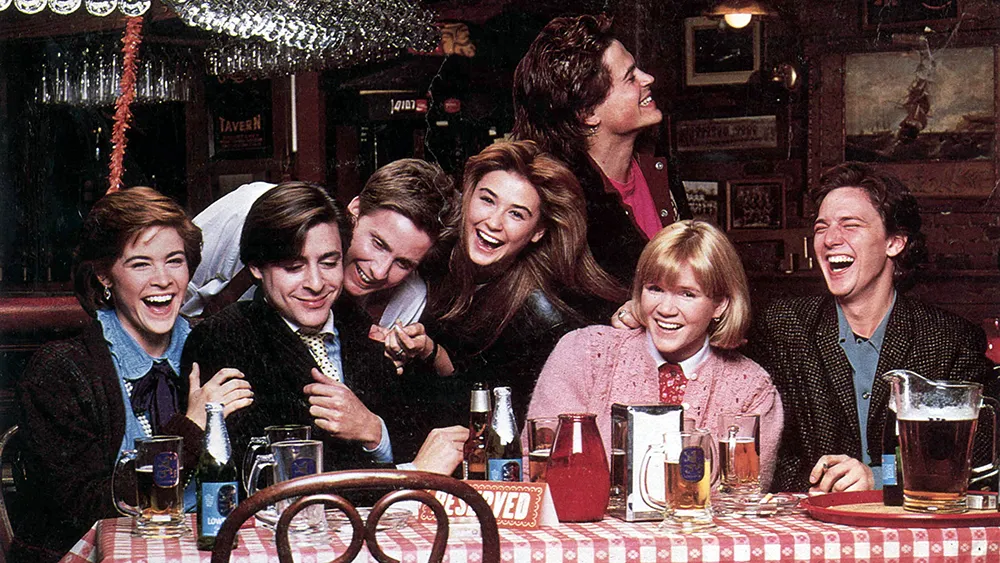
From the glorious bombast of Starship’s throwback rock ‘n’ roll sermon, we transition to the inspirational blue-collar vibes of John Parr’s “St. Elmo’s Fire.” As the theme song for that quintessential 80s Brat Pack flick, the track distilled all the film’s themes of youthful yearning, uncertainty, and the burning call to embrace one’s personal destiny into a soaring fist-pumper for the ages.
Parr’s vocals are pure workingman’s gravelly conviction, selling each defiant self-help exhortation with the kind of persuasive zeal that could unite entire arenas in communal reverie. This was by-the-bootstraps motivation set to a surging wall of synthetic rock bombast, the musical embodiment of that cinematic moment where the gang finally finds their inner resolve and striding-off purpose. From those iconic opening guitar licks and synth whooshes, “St. Elmo’s Fire” crackles with a palpably inspirational voltage designed to jolt even the most purposeless soul into action.
The lyrics cut an admittedly hokey path, dishing out sloganeering exaltations to keep pushing forward, take chances, and never give in to doubt and fear, with Parr delivering each line in a gale-force gusto that sells the entire package. Yet despite its fist-clenched posturing, there’s a kernel of universal emotional truth in the song’s resolute convictions that continues to resonate decades later.
We’ve all faced our own moments of listless paralysis and self-defeating despair. So while Parr’s patented “Man in Motion” roar-along refrains may play as cheeseball fodder for some, for countless others it’ll always serve as a pep talk from some primal well of resilience we all need to tap into now and then. Plus, from a purely aesthetic perspective, there’s something admirable about a song that wears its heart so unabashedly on its denim sleeve. In its refreshing dearth of irony or pretence, “St. Elmo’s Fire” stands as a monument to the power of just owning your damn feelings, no apologies or postmodern detachment required.
The 1980s was the revolutionary decade of the 20th century. From the Falklands war and the miners' strike to Bobby Sands and the Guildford Four, from Diana and the New Romantics to Live Aid and the 'big bang', from the Rubik's cube to the ZX Spectrum, McSmith's brilliant narrative account uncovers the truth behind the decade that changed Britain forever - politically, economically and culturally.
While Parr’s working class inspiration proved universally galvanising, I’d argue few artists in 1985 captured the collective American psyche quite like The Boss himself, Bruce Springsteen. His mammoth hit “Born in the U.S.A.” tapped into both the lingering Reagan-era jingoism and the countervailing currents of patriotic disillusionment stemming from the post-Vietnam ennui.
The song’s pop-rock fireworks and rousing singalong chorus initially played as a straightforward flag-waving call to American pride. Yet those who truly heeded Springsteen’s signature lyricism soon discerned a far more ambiguous story—a raw indictment of how the country had squandered its own working class sons and failed to deliver on the treasured American dream of upward mobility and opportunity for all.
Ever the master storyteller, Springsteen embedded a searing socio-economic truth within an anthemic framework designed to shake the arena rafters and command pogo-ing crowds for miles. Like so many of his iconic character studies, “Born in the U.S.A.” transcended the simplistic visions of hokey patriotic brouhaha or entitled grievance to capture a fundamental national experience—that of the proud, desperate, and disillusioned all at once.
Springsteen’s holler gave an incisive emotional resonance to the simultaneous feelings of love and disappointment with country and self that defined the Reagan era mindset. It was a work that could affirm and challenge in the same breath, forging a complex conversation in a language of shout-along hooks and fist-pumping riffs.

Speaking of complex conversations happening in deceptively simplistic packages, there’s perhaps no better 1985 Trojan Horse musical missive than Dead or Alive’s runaway smash “You Spin Me Round (Like a Record).” On one level, it’s just a bouncy, irresistible dance-floor groover—all pulsing synth-funk rhythms and cheeky romantic come-ons delivered through Pete Burns’ unmistakable sneer.
But dig past the surface camp and sheer dumb-fun exhilaration and you’ll find a winking subversion of gender norms and delicious queer energy coursing through the whole enterprise. Dead or Alive fully embraced their musical outsider status on “You Spin Me Round,” transforming Burns’ androgynous persona into a swaggering totem of the era’s boundary-pushing attitudes towards sexuality and identity.
From the eye-catching makeup and fashion in the iconic video to the slippery lyrical subtext about infatuation and dizzying romantic longing, the whole package was a defiant liberation from the rigid societal roles of yesteryear. Sure, on one hand it was just a classic dancefloor pleaser. But it was also a raised middle finger to anyone still clinging to outdated ideas about how a pop idol needed to look, sound, and carry themselves.
Yet for all the subversive boundary-pushing on display, Dead or Alive still somehow crafted one of the decade’s most stupidly infectious, inescapably catchy earworms. That central hook is just pure pop alchemy, weaving itself permanently into the listener’s unconscious synapses and rendering total resistance futile. “You Spin Me Round” was a gleeful pop Trojan horse—an ostensibly mindless trifle of danceable abandon that also radiated defiantly progressive ideas about identity and radical self-expression. The beat made you move, and the message behind it all sneakily expanded minds. It was 1985’s most shamelessly entertaining act of subversion.

For a more high-concept brand of envelope-pushing audacity from 1985, we turn our gaze to that mad genius Kate Bush and her hypnotically eccentric “Cloudbusting.” Inspired by the life and pseudoscientific explorations of crackpot psychologist Wilhelm Reich, the track unfurled like some spellbinding combination of poetry reading and theatrical stage production.
Over a slinky foundation of treated vocals, eerie sound effects, and cavernous electronic drums, Bush delivered a freeform lyrical narrative dripping with mystical metaphors and evocative imagery. Her signature sky-scraping vocal swoops and emotive spoken interludes conjured up visions of arcane rituals and vast cosmic expanses as she brought Reich’s offbeat folklore to impressionistic life.
Thanks to the groundbreaking accompanying music video that placed Bush alongside a towering Donald Sutherland in full recreations of Reich’s atmospheric experiments, “Cloudbusting” became a full-on multi-media artistic statement. It was a singularly bold fusion of the avant-garde and the accessibly melodic that only someone with Bush’s singular creative vision could manifest.
The singer firmly established herself as a restless artistic polymath not bound by the conventional constraints of the pop idiom. She was a true original, creating works of dense surrealist poetry and theatrical vignettes as often as she crafted sticky pop hooks. And on “Cloudbusting,” she forged her most enduring interdisciplinary masterpiece—one that toed the line between the transcendent and the challenging, the strange yet the strangely relatable. It was peak Kate Bush, and pop music would never quite be the same again.
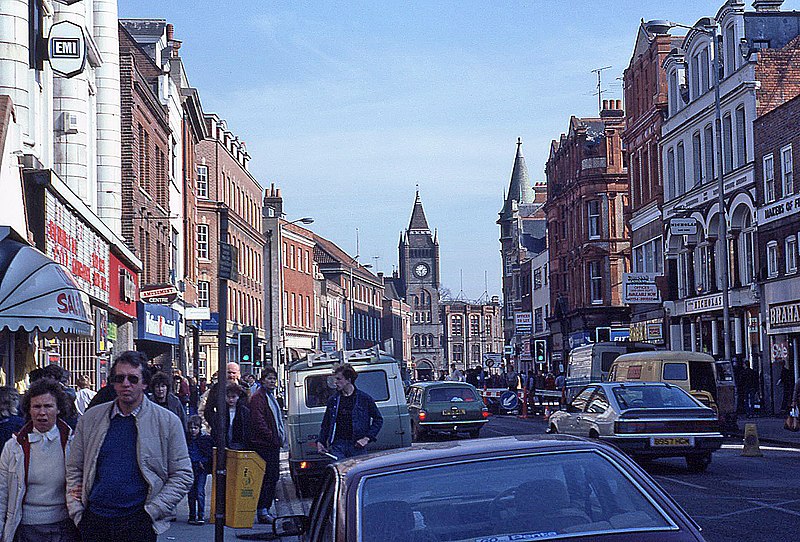
While Ms. Bush experimented with sonic impressionism and the aesthetics of outsider mysticism, others in 1985 were using pop as a vessel for more straightforward good vibrations. Enter Katrina and the Waves with their sunshiny, irrepressibly joyful anthem “Walking on Sunshine.” Over a high-octane wallop of horns, harmonies, and hooks galore, Katrina Leskanich delivered a simple, unshakable affirmation of the power of love to fill the soul with radiant bliss.
From the opening lines all about waking up feeling golden and beholding a “rainbow of reality,” it was clear this track took as its raison d’etre the pure and unapologetic celebration of romance’s ability to make the world feel newly vibrant. Walking on air, infectious euphoria, a childlike sense of wonder—it’s all there condensed into 3-and-a-half minutes of pure pop jubilation.
Where so much of 1985 gave us artsy gestures towards sociopolitical subversion or angst-ridden emotionalism, “Walking on Sunshine” was a full-throated declaration of unironic positivity. It brazenly insisted on revelling in the simple joys of infatuation and finding magic in melodic hooks and hook-filled vocal lines. The whole thing was a blast of pure adrenaline and full-bodied feeling, staking its claim as an ebullient moment of pure pop gratification amidst all the fraught contemplation and tortured existentialism dominating so much of the year’s musical realms.
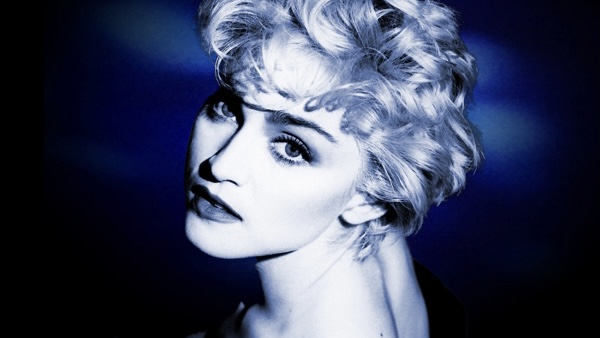
While Katrina and her groove were unabashedly embracing romantic rapture, Madonna took aim squarely at the rampant materialism defining the era’s excess on her culture-skewering smash “Material Girl.” Over a slick, funky foundation of electronic rhythms and disco-filtered hooks, the Queen of Provocation delivered her signature ironic kiss-off to the decade’s superficial consumerist values, all while revelling in her own ascendance as an icon of pop commodity fetishisation.
It was the kind of deliriously meta move that encapsulated Madonna’s consummate pop instincts—fully leaning into her public persona of a chameleonic chameleon who could both embody and satirise societal fixations. With a winking smirk and calculated choreography, Madge spun an elaborate tale of materialistic romantic machinations and old-world fantasies of courtship through the lens of the Reagan era’s love affair with the pursuit of wealth as a status symbol unto itself.
Yet for all its self-referential kinkiness and playfully skewering of high society norms, Madonna still managed to imbue the whole production with an earworm insistence that ensured its transition into a bonafide pop ubiquity. The central hook is effortlessly singable and the groove is impossible to not instinctively nod along to. Even as she smuggled witty cultural subversions through her red-lipped sneer, the pop polymath found a way to embrace the sheer musical bliss of shameless hooks and swinging rhythms.
Madonna’s duality of style maven and sly provocateur was emblematic of so much great pop in 1985. As we’ve seen from Katrina & the Waves, Dead or Alive, and Kate Bush, the year’s most vital music was both in thrall to the simple visceral pleasures of pop while actively testing its artistic and conceptual frontiers. It was high cultural art masked in the guise of the viscerally gratifying and unabashedly fun. A sweet spot for both the hedonist and the intellect.

And then you had examples like George Michael’s Wham! smash “I’m Your Man” where the surface polish and shiny pop production masked deeper stirrings of romantic yearning and erotic undercurrents. On paper, it reads as just another saccharine exercise in 80s bubblegum soul. But crank those speakers and Michael’s aching, passionate vocal delivery oozes with a sultry, almost carnal charisma that’s damn near irresistible.
Wedded to a sleek, propulsive groove as lush and soft focus as late 70s soul at its most indulgent, Michael’s ad-libs and pleading lyrical turns transcend the seeming lightweight fluff and transmute into a high gloss, synth-fuelled bedroom serenade. “I’m Your Man” positively simmers with unmistakable desire and a thirst to delight and sate one’s lover. It’s deceptive pop pleasure that keeps threatening to bloom into full-on sensual rapture anytime Michael starts really leaning into those glossy, melismatic vocal runs.
It seemed only fitting that Michael was able to pull off such feats of elevated pop intimacy, given that he first burst onto the scene in the early 80s as a poster child for emotional vulnerability and sensitive brooding. The soulful crooner’s breakthrough in 1985 came via his show-stealing vocal turn on “Don’t Let the Sun Go Down On Me,” where his achingly human vocals elevated Elton John’s standard power ballad into the realm of the searing and operatic.
So while he was strutting his stuff as a consummate showman on “I’m Your Man,” underneath that smooth surface charisma lurked a deep capacity for genuine emotional wallop. Michael’s ascent exemplified how so many pop auteurs in 1985 seemed bound and determined to defy conventions and inject a raw, poetic emotionalism into the idiom’s most escapist tendencies. If the decade’s aesthetics and mainstream sensibilities were slanting towards the sleek and the synthetic, Michael and his ilk were pumping hot-blooded feeling back through the machine.
Christened Reginald Dwight, he was a shy boy with Buddy Holly glasses who grew up in the London suburb of Pinner and dreamed of becoming a pop star. By the age of twenty-three, he was performing his first gig in America, facing an astonished audience in his bright yellow dungarees, a star-spangled T-shirt and boots with wings. Elton John had arrived and the music world would never be the same again.
This intermingling of pop’s gleaming surfaces and profound emotional depths made for a fascinating dichotomy in 1985. Take Paul Young’s wistful, lovelorn cover of the Daryl Hall standard, “Everytime You Go Away.” On a purely aesthetic level, it unfolded as a straight-up, no-frills radio-ready ballad built for lighters-in-the-air crowd singalongs. The glossy arrangements aimed for classic pop craftsmanship more than eccentricity or pushing envelopes.
Yet the inherent melodrama and palpable heartache animating Young’s vocals and the song’s core themes of love, loss, and profound longing revealed a deeper resonance in the song’s very DNA. Especially in its music video incarnation, with Young’s vulnerable, pleading performance placed against a backdrop of emotionally evocative b-roll, “Everytime You Go Away” achieved a certain wistful profundity.
While Paul Young channelled lovelorn introspection on “Everytime You Go Away,” Bruce Springsteen conjured up nostalgic revelry and hard-earned wisdom on his fist-pumping anthem “Glory Days.” Over a propulsive roots-rock stomp, The Boss spun an incisive vignette about an ageing former high school sports star coming to terms with the harsh realities of getting older and moving on from one’s youthful triumphs.
With his signature dry wit and knack for rich, cinematic storytelling, Springsteen turned what could have been a hoary premise into a poignant meditation on grappling with unfulfilled dreams and the relentless march of time. As the narrator reminisces wistfully about those long-gone “glory days” when he was the big man on campus, you can feel the pangs of bittersweet regret and the ache to somehow recapture that fleeting magic.
Yet Springsteen being Springsteen, there’s also an undercurrent of resilient nobility pulsing through the track. Our protagonist may be floundering in the doldrums of adulthood, but he still carries the fire of his former glories – using those memories as fuel to persevere in the face of life’s inevitable letdowns. “Glory Days” is both a wistful lament for the unstoppable passage of time and a galvanising call to never surrender the spark that made those glory days possible in the first place.
It’s a quintessential example of how The Boss could merge the personal and the universally resonant into a singalong anthem of renewal. What could have been mere nostalgic mawkishness in lesser hands is transmuted into an inspirational emotional jolt – a reminder to grow up but never lose touch with that core spark of youthful vitality that still rages within. Rock’s reigning poet of the workingman’s soul delivered yet another timeless classic.

Speaking of icons cementing their larger-than-life status in 1985, this was the year Billy Idol truly ascended to the level of full-blown rock god. With the epochal one-two punch of “White Wedding” and “Rebel Yell” the eternally sneer-lipped Idol fused punk’s rebellious spirit with the hook mastery of classic pop/rock into a glorious celebration of style as substance.
The former showcased Idol’s flair for injecting even the most frivolous pop ditties with streaks of menace and provocative subtext. Ostensibly written as a tossed-off novelty about experiencing a risqué interracial wedding, “White Wedding” somehow became a towering anti-establishment anthem, its sawing guitar riffs and Idol’s signature sneer channelling kernels of genuine societal dissent into easily digestible pop aggression. Like so much classic Idol, it was a Trojan horse of subversive ideas smuggled into the mainstream via undeniable hooks and an overabundance of cool.
As for “Rebel Yell,” well, it was nothing less than a clarion call for a new generation of disaffected youth. Fuelled by Idol’s snarling, throat-shredded vocal pyrotechnics and Steve Steven’s relentless hot-wired riffs, the whole thing crackled with the ferocious, bad-tempered intensity of a new breed of rock star – one who traded out the decadent poses of yore for a streetwise minimalism that cut straight to the primal pleasures of volume and reckless abandon.
Idol instinctively understood that the key to embodying the rebel spirit was not to drape it in grandiose pretence, but to strip that energy down to its barest essentials of guitar slashing and id-drenched delivery. “Rebel Yell” reduced rock’s eternal clarion call to its core elements – furious rhythms, leering sexuality, and more piss and vinegar than a horde of Rottweilers. It was a thrilling moment of arrival for an artist who would quickly cement his icon status among the ranks of rock’s leading outlaw figures.

From the snarling anti-establishment fury of Billy Idol, we detour to the loftier artistic realms of Queen and their soaring anthem “One Vision.” Ever the maximalists, the newly christened Wembley Stadium legends poured every ounce of their pomp and theatrical bravado into this rousing rallying cry for global unity and looking towards a higher plane of human potential.
Driven by Freddie Mercury’s signature multi-tracked vocal pyrotechnics and Brian May’s herculean guitar heroics, “One Vision” is every bit the arena-battered call to arms its titanic production values suggest. The band clearly viewed the occasion as a moment to deliver a generation-defining statement piece, cramming as much pseudo-philosophical pondering and rafter-shaking grandeur as a single pop song could reasonably contain.
Yet for all that bloated bravura and vaulting self-importance on display, there is something undeniably rousing and universal about Queen uniting their faithful around such soaring ideals as collective transcendence and bootstrapping our way to societal progress through sheer force of communal will. You could pick apart the lyrics for their trite loftiness, or marvel at the sheer lack of subtlety animating Freddie and co’s leonine vocal runs, but at the end of the day the pure air-punching visceral thrill of it all is impossible to deny.
Few bands of the era understood the power of pop music to deliver unifying emotional catharsis quite like Queen, and “One Vision” stands as their quintessential statement of purpose. It’s equal parts admirable, goofy, and altogether exhilarating in its full-throated bombast. The last pure pop monolith before ironic detachment and postmodern deflation changed the game.
You know the name and you can't mistake the voice. Now you can read the incredible story of how a shy, music-loving teenager called Gaynor Hopkins morphed into legendary international superstar Bonnie Tyler and carved out an extraordinary career that is still going strong to this day.
After five decades in the business - during which time she has recorded some of the most iconic songs of all time, travelled the world and performed for royalty and the Pope - Bonnie is sharing her fascinating journey for the first time. And she's not holding back.
While Queen strived for such maximalist heights of unifying pomp, others like Madonna were content to keep matters a bit more contained and character-focused. In her iconic “Crazy For You” music video, the Material Girl stripped away the image-conscious provocations to deliver a bracingly direct and vulnerable outpouring of earnest lovestruck devotion.
Set against a backdrop of twinkling synths and music box-styled innocence, Madonna sheds her usual vixen trappings to channel a wide-eyed, almost childlike romanticism. Her vocals carry a tremulous softness and warmth that stands in sharp contrast to the usual veneers of campy grit and theatrical guile. Madonna’s performance feels unguarded and endearingly human – the exaggerated pop diva facade disappearing to reveal a simple young woman reckoning with the destabilising rush of desire.
It’s a masterful demonstration of just how malleable and emotionally versatile Madonna could be as an artist and cultural chameleon. Coming on the heels of her overtly provocative “Like a Virgin” era, “Crazy For You” momentarily returned things to a slightly more demure and understated place – a tone poem to the universal vulnerability of the lovestruck condition.
For an artist who often played things with a heavy wink and thick layers of conceptual subtext, this was a refreshing pivot towards nakedness. A reminder that for all Madonna’s towering mastery of pop as a postmodern art piece and socio-political dissection, at her core she was a sharp songwriter and supple enough performer to sell elemental human emotions like love and nervous yearning as convincingly as she eviscerated cultural sacred cows. It’s a lovely little one-off respite from the provocations – a glimpse at sheer romantic unguardedness before the clever pop subversions and material world critiques reasserted themselves.
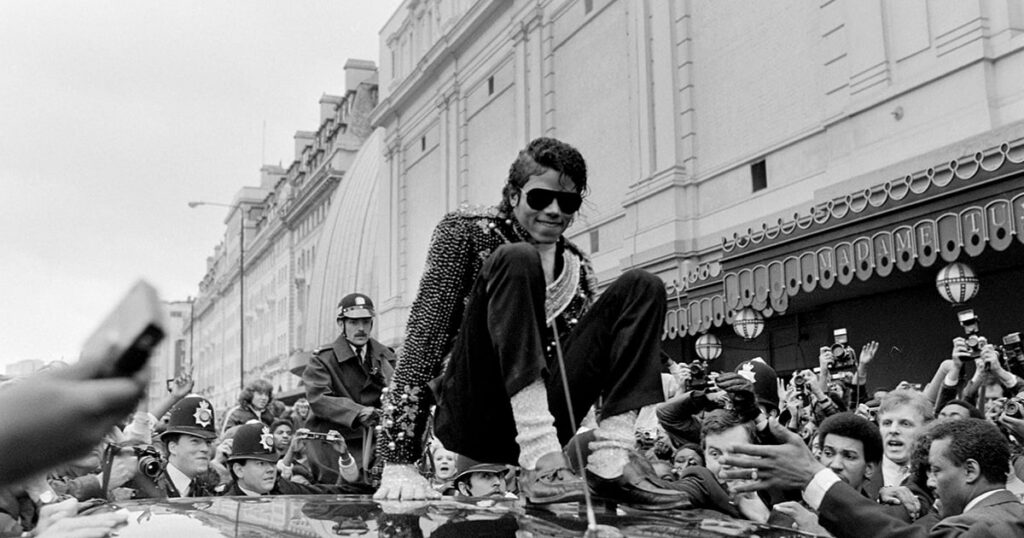
If Madonna was exploring romantic revelry through a subdued, character-driven lens, then Peter Cox & Go West were all about laying the seductive appeal on thick. The glamorous duo’s international smash “Call Me” was pure velvet-dipped pop come-on – heavy on the debonair panache and aimed squarely at igniting the loins.
From Cox’s deep, slippery croon to the song’s production bathed in a glossy haze of night club flair and gently swaying rhythms, the whole track oozed a decidedly sensual cosmopolitan vibe. Lyrically it trod well-worn territory invoking images of lonely nights and the desperation to spark that long-awaited romantic connection. But Cox and company invested their yearning cliches with such velvety vocal confidence and impeccably refined musicality that it transcended the potentially cornball implications.
Like so many of the year’s more stylishly adult-oriented pop moments, “Call Me” elevated the inherent cheesiness of its erotic murmurings through sheer levels of craft and unassailable cool. The central hook was bulletproof, the grooves silky and refined, and the unrelenting atmosphere of nocturnal longing executed with palpable conviction. While perhaps not the first name one conjures up in the annals of seminal 1985 hits, Go West deserve a special nod for upholding the highest values of pop sophistication and carnal aplomb. “Call Me” was both a superlative crossover smash and a timeless ode to the enduring allure of supreme seductive style.

And speaking of simmering eroticism filtered through iconic pop polish, you simply cannot reflect on 1985 without encountering the eternal spectre of rebel spirit and raw, animal charisma that was Billy Idol’s seismic “Rebel Yell.” Propelled by Steve Stevens’ muscular, lascivious guitar work and Idol’s signature snarling vocal sneer, the track was a genre-redefining instant-classic convergence of punk grit and pure pop seduction.
For millions of fist-waving, lip-curled acolytes, “Rebel Yell” fully consecrated Billy Idol as the ultimate embodiment of rock’s timeless rebellious and suggestive spirit. Like so many of the era’s definitive works, it achieved a universal reach not merely through sheer hooks and craftsmen-level execution, but through the clarity of vision and persona fuelling its essence.
In Idol’s case, the entirety of his carefully constructed outlaw iconography – the sneer, the unbridled coiffure, the sartorial swagger – all congealed around “Rebel Yell” to forge an archetype of uncompromising potency. This was the track that launched a million youthful reveries of shedding life’s repressive shackles in a haze of blissful nihilistic liberation.
Like the Rolling Stones before him, Idol wielded a mystical power to inspire vivid daydreams of risk, sexual delinquency, and all-out war against the grey conformity governing daily existence. His every uttered syllable, dripping with the utmost sex-drug-and-rock-and-roll conviction, awakened our primal, pleasure-seeking ids and dared us to shatter our internal shackles to the fullest extent. A clarion call to give your inner beast its wild due.
The very notion of “rebellion” has admittedly been rendered cliché by decades of consumer capitalism cannibalising genuine counterculture for mere marketing fodder. Yet few artists have encapsulated the visceral thrill and sheer sexual magnetism of true defiance in the face of societal constriction quite like Idol at his peak. No mere jingle scribes, he and Stevens created an entire self-contained mythology of nonconformist self-actualisation – one that you could immerse yourself in for three-and-a-half chemically electric minutes. “Rebel Yell” was a pathway to collective emancipation, or at least a tantalising glimpse into the glorious id-driven abyss should you choose to embrace your wildest self.
Rod Stewart was born the working-class son of a Scottish plumber in North London. Despite some early close shaves with a number of diverse career paths, ranging from gravedigging to professional football, it was music that truly captured his heart - and he never looked back.
Rod's is an incredible life, and here, thrillingly and for the first time, he tells the whole thing, leaving no knickers under the bed. A rollicking rock 'n' roll adventure that is at times deeply moving, this is the remarkable journey of a guy with one hell of a voice - and one hell of a head of hair.
While Idol forged entire catalogues around amplifying the spirit of unfettered rebellious masculinity, Phil Collins spent 1985 mining the veins of lush romantic longing and thirst for connection on tracks like his monster hit “Sussudio.” Augmenting his signature jazz-pop chops with a dollop of the era’s cutting-edge production elements and electronic textures, Collins crafted a sultry, mid-tempo synthesis of blue-eyed soul and synth-driven sophistic-pop that simmered with barely restrained erotic energy.
Those gliding programmed rhythms, fizzy synth washes, and unmistakable melodic hooks provided the musical bedrock over which Collins layered one of his definitive lovelorn vocal masterclasses. His signature raspy croon hits just the right blend of hangdog sensitivity and subdued yearning – perfectly crystallising the album’s central themes around romantic privation and the timeless struggle for authentic emotional connection.
Like so many of Collins’ most enduring works, “Sussudio” strikes an exquisite balance between muscular pop dynamism and introverted melancholy. The production is bold and sleek, but never to the point where it overwhelms the nuances of emotional voicing and lyric storytelling. Every element coalesces into a seamless, impeccably constructed mood piece that sucks the listener into its particular hazy, yearning climate of the mildly bruised soul aching for something…more.
Whether delving into the aural ephemera of a potential one-night-stand or providing the wistful closing grace note to a movie about ghostly time travel, Collins was simply an unparalleled master of threading the human experience with resonant romanticism and earned late-night pathos. “Sussudio” endures as one of the most iconic, distinctive, and yet wholly unpretentious additions to his peerless pop canon.
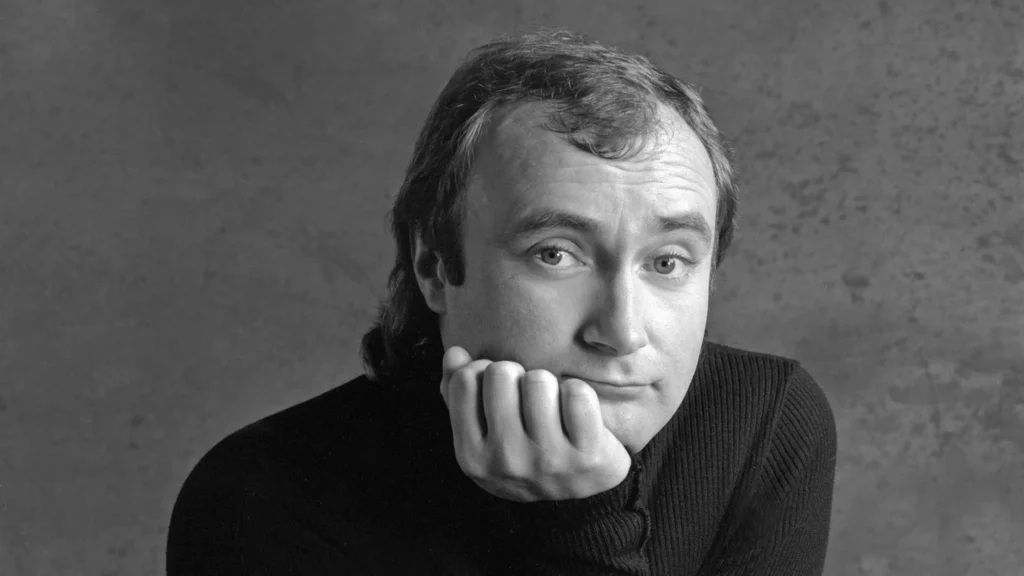
While Collins luxuriated in hazy atmospherics and murmured romantic longing, Glenn Frey brought a slick rock n’ roll drive to his standout single “The Heat Is On.” Written for the Beverly Hills Cop soundtrack, Frey’s tune epitomised that uniquely 80s convergence of MTV-era confidence and brash, testosterone-fuelled cinematic thrills.
More so than any other musical work on that iconic soundtrack, “The Heat Is On” perfectly encapsulated the film’s central motifs – a brassy, irresistible dynamism undercut with constant simmering elements of nocturnal suspense and illicit city operations transpiring at the corners of the frame. Just like the iconic Axel Foley character portrayed on screen, Frey’s vocal performance and the track’s overriding sonic aesthetic split the difference between swaggering cool and permanently cocked anxiety.
That insistent, percolating backbeat and Frey’s wailing, note-twisting vocal pyrotechnics contributed an enduring essence of careening, uncontrolled forward momentum. You can practically envision a sleek urban backdrop of flashing lights and shadowy silhouettes whizzing by with each incessant verse and chorus cycle. Everything about “The Heat Is On” screams high-stakes, big-city intrigue laced with just an undercurrent of potential violence and danger lurking around each corner.
Yet through Frey’s impeccable melodic intuition and knack for radio-ready hooks, he strikes the perfect balancing act between movie trailer propulsive excitement and slinky, indelible song-craft. For all its obvious indulgence in cinematic tone and slick 80s sauce, “The Heat Is On” remains a well-constructed, earworm pop-rock nugget beneath the glossy thematic dressings. Striking that delicate dance between pop immediacy and aspirations towards narrative sweep encapsulated the decade’s evolving symbiosis between Hollywood cross-promotion and chart supremacy. Frey was the consummate bridge between those worlds – a pop craftsman adept at translating grandiose cinematic vibes into sticky earworm immortality.

Speaking of translating grand artistic visions into inescapably sticky musical motifs, let’s turn our attention to Harold Faltermeyer’s seminal instrumental theme “Axel F” from that same iconic Beverly Hills Cop soundtrack. Essentially tasked with crystallising the entire essence of that film’s electric, inner-city texture and fish-out-of-water tensions into a single musical composition, Faltermeyer responded with one of the most inescapably massive synth-driven grooves this side of Giorgio Moroder.
From its opening unmistakable synth fanfare that’s been permanently seared into our collective unconscious, “Axel F” is a shining, neon-kissed monument to the era’s fascination with merging cutting-edge technology and old-school funky-butt vibes. Each frenetic, densely programmed synth line and a spastic burst of rhythmic forward momentum seemed primed to telegraph the film’s agitated central themes of urban culture clash and clumsy cops trying to outmanoeuvre the slick criminal element.
Yet for all its evocative movie-trailer-readiness, Faltermeyer’s instrumental masterpiece stands alone as an immensely gratifying slab of 80s electronic funk mastery. Unfurling over the course of nearly eight minutes, the epic “Axel F” works through a suite of slyly interlocking melodic passages, sinewy bass motifs and breakbeat segues with a level of compositional sophistication that makes clear Faltermeyer was playing in far loftier creative realms than typical soundtrack background texture artists. This was serious Berlin-school synth mastery, a sterling example of an auteur reshaping the limits of the instrumental pop idiom for the digital production age.
From its punchy opening salvos and squiggling central synth-riffs, “Axel F” displays an intuitive genius for squeezing maximum thrills out of the nascent voltage-driven music technologies of the era. Faltermeyer’s work here wasn’t just evocation through sound, but a bold step forward in mapping the cyborg frontier where humans and machines coalesced into unified sound.

After basking in the neon-kissed synthetic funk mastery of Harold Faltermeyer’s “Axel F,” it only feels right to swing the spotlight over to the smooth operators of DeBarge and their smouldering quiet storm classic “Rhythm of the Night.” This slinky slab of sensual R&B remains an undisputed high-water mark for the family band’s talents at blending lush, multi-tracked harmonies with sleek contemporary production values.
From the very first intoxicating swell of that sumptuous synth-pad atmosphere and the first melt-worthy intertwined vocal refrains, “Rhythm of the Night” envelops the listener in a warm, tantric slow-jam rapture. The DeBarge siblings instinctively understood the power of restraint and tease, imbuing each breathy vocal run and oscillating melodic flourish with untold depths of yearning eroticism.
This was pure blue-lit, champagne-laced intimacy distilled into aural form – a soundtrack for that particular moment when flirtatious glances blossom into a full-blown simmering seduction. Each silken harmony and gently throbbing programmed beat radiates an effortless sensuality, beckoning the listener ever deeper into a realm of shadowed romantic delights.
In an era where so much of pop and R&B production could easily become overblown and trapped in restrictive genre conventions, DeBarge displayed a preternatural gift for infusing sophisticated musicality and daring sonic experimentalism into traditional tropes of seduction and desire. “Rhythm of the Night” demonstrated their ability to transcend the clichés of the slow jam idiom and transmute it into sublime art – every lyrical utterance and production embellishment rendered with a sense of meticulous, sensual precision.

While DeBarge worked their silky magic on the R&B scene, Lionel Richie reaffirmed his stature as a pop balladeer par excellence with his timeless Oscar-winning turn on “Say You, Say Me.” Penned for the Mikhail Baryshnikov/Gregory Hines drama White Nights, the song’s central themes of romantic devotion and the yearning for cross-cultural understanding resonated profoundly with mid-80s global audiences.
As had become his calling card, Richie embodied his central conceit of unflinching romantic fidelity with a canny blend of subtlety, pop economy, and sheer melodic mastery. The lyrics toed a fine line between standard romantic platitudes and a deeper, more spiritually enriching contemplation of love’s redemptive powers as a unifying force across all cultural and political boundaries.
But it was Richie’s ineffable gift for burrowing those humanist affirmations inside impeccably luxurious melodic packaging that truly elevated “Say You, Say Me” into an all-timer. From that opening rippling piano signature and Richie’s trademark pillowy croon to the understated grandeur of the chorus resolutions and harmonic arrangements, every aspect of the song exuded class, finesse, and a deceptive grace that lent maximum emotional punch to the material’s central affirmation of transcendent amour fou.
Across his remarkable 80s peak, Richie consistently displayed a preternaturally intuitive grasp of how to marry subtle pop craftsmanship with that rare ability to tap directly into the collective heart’s universal romantic impulses. While many of his Infinite-ringleted mullet rock contemporaries were content to bludgeon with bluster and gaudy sentimentality, Lionel always knew that less is more. These timeless ballads resonated so potently precisely because of their understated directness and economy – every note and phrase etched with the utmost clarity of romantic purpose. You never walked away from a Richie pop moment without a profound sense of emotional truth being channeled and affirmed.
How do you protect those you love when every decision you make causes harm? “Through the Barricades” is the story of a young man constantly trying to overcome insurmountable hurdles. It's about ordinary people trying to achieve extraordinary goals. Set in working-class East London during the 1980s it’s the story of love, friendship and of tragedy.
If Lionel brought his trademark soulful finesse and pop song-craft intuitiveness to the glossy arena of movie tie-in balladry, then Phil Collins found his stride hitting similar thematic territory while operating from a somewhat grittier, idiosyncratic creative space. Songs like his mammoth hit “One More Night” dripped with a distinctly weathered romanticism that anchored even his most commercial releases with an undeniable authenticity of voice.
Slipping in between propulsive, Motown-inflected rhythms, atmospheric synth-pad swells, and Collins’ signature raspy entreaties, “One More Night” skilfully fused the best mainstream pop instincts with a craftsman’s intuitions for injecting personality and real-world grit into the proceedings. At once instantly recognisable and yet curiously subdued, the track felt like dispatches from the bruised but still beating heart of a true showman tapping into real depths of ache and longing.
Collins had a preternatural ability to capture that specific tension – the push and pull between a desire for deeper actualisation and the inescapable gravitational lures of the everyday. Many of his biggest hits walked that fraught tightrope between escapism and bone-deep melancholy with an effortless naturalism. “One More Night” in particular felt like an intimate late-night confession from a soul wrestling with its most fundamental romantic compulsions and regrets. Yet disguised within that tenderly rendered inner sanctum of turbulence was also one of Collins’ most insistent and durable pop refrains.
Therein lied the key to Phil’s greatness as a pop craftsman – from the most unlikely of emotional excavations invariably emerged remorselessly sticky hooks and melodic contours powerful enough to affix themselves to the grand collective consciousness. So while “One More Night” could resonate as a raw, anguished appeal to finally sever the chains of emotional codependency, the magic was in how Collins camouflaged that heavy-hearted core inside something that felt as infectious and welcoming as anything else dominating your local Top 40 dial.
The ability to operate on multiple emotional strata, trafficking in universally relatable longings and intimacies while also effortlessly gratifying the insatiable pop Id, was essentially the prime mover for so much landmark music in 1985 – be it in the realms of rock, pop, or R&B. Few exemplified that magic act of illusion and revelation better than Collins, whose own artistic trajectory felt like a quest to mine his most personal depths for inspiration while simultaneously upholding pop’s most sacred commercial imperatives.

Nowhere was this convergence of the deeply personal and the broadly populist better exemplified than on the blockbuster pop juggernaut that was “Separate Lives.” The epic theme of the film White Nights represented Collins’ art at its most grandiose and emotionally generous.
Joined by the divine harmonic talents of Marilyn Martin, Collins channeled the powerful longing and melancholic romanticism of the movie’s central premise – a love forged in tragic isolation and torn apart by geopolitics – into the kind of melodic opus that could shake stadium rafters and shatter inner tender souls all at once. Martin’s breathy tones combined with Collins’ everyman earnestness in a lush crescendo of shared yearning and lyrical pleas for romantic deliverance.
The song’s central motif amounted to the musical equivalent of two souls trying to rekindle an ember of hope and genuine intimacy amidst a swirling storm of external forces designed to drive them apart. Martin and Collins’ trading of lines, improvisational melodic flights, and deep rhythmic pocket all contributed to an overarching sense of two kindred spirits locked in desperate, cosmic slow dance against the tides of unseen adversity.
The sheer escalating intensity and mounting urgency animating each triumphant chorus crescendo and sky-reaching ad-lib fusillade ensured that “Separate Lives” endures as one of Collins’ defining populist artistic statements. By merging the personal intimacies of his signature vocal delivery and song structure with the sweeping dramatic grandeur befitting a Hollywood motion picture, the combined talents managed to render something both cinematic in scope yet rooted in the most relatable and universal human truths. The heart yearns, shackles remain, but love’s power to elevate and inspire can never be extinguished.
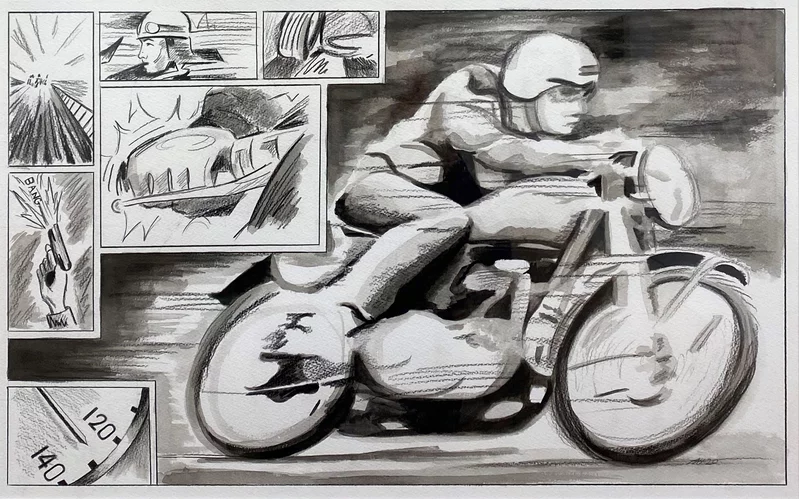
Of course, while Phil Collins was indulging his maximalist pop storytelling tendencies to blockbuster proportions, others in 1985 were operating on a slightly more subversive, expectation-defying wavelength. Case in point: the deliriously quirky and absurdist debut single from Norwegian pop savants a-ha. With the immortal “Take On Me,” the previously unknown Scandinavian upstarts delivered one of the most delightfully idiosyncratic visions in pop music history – a work that deftly straddled the lines between minimalist art-rock discipline and shamelessly gratifying MTV-era pop largesse while simultaneously pointing towards exciting creative frontiers through its groundbreaking music video innovations.
From its unmistakable opening synth riff, rendered in an oddly subdued low-mixed tone that hinted at the eccentricities to come, “Take On Me” unfolded as an irresistible tapestry of contrasting sounds and thematic incongruities. The propulsive, fretless bass/drum groove and martial keyboard rhythms laid down a surprisingly understated foundation over which Morten Harket’s operatic tenor soared with an unexpected mixture of power and tenderness.
The end result amounted to something that felt both strangely familiar and thrillingly exotic all at once. On the surface level, the song followed a similar stylistic trajectory to the era’s most prominent New Romantic and synth-pop hitmakers – dressing its emotional undertones in a veneer of metallic, forward-leaning production precision. However, “Take On Me” seemed to constantly delight in undercutting its own forays into pop formalism – throwing stylistic curveballs at the listener with each verse and chorus that unfolded into fresh new stylistic detours.
Harket’s vocals alone represented a hugely idiosyncratic creative choice, with his airy, plaintively pleading timbre juxtaposed against the track’s robotic electronic undercarriage in deliriously unexpected ways. By the time the song escalated into its iconic, emotionally rapturous refrain of “Take on me (take on me), take me on (take on me),” audiences were suddenly confronted with the most rousing of pop payoffs being delivered through the least predictable of stylistic vessels.
In an era where pop and rock artists were increasingly prizing emotive sincerity through electronic gateways, “Take On Me” stood apart as a joyously unironic celebration of staking out your own avant-garde turf with swaggering confidence. And that’s before you even factor in the famous attached music video, which broke new ground by seamlessly incorporating rotoscoped comic animation alongside live performance footage.

Directed by Steve Barron (who would go on to become one of the true iconoclasts in the realm of music video visual poetry in the MTV era), the clip for “Take On Me” represented high-concept world-building on a previously unseen scale. The song’s central narrative of chivalric courtly love was literalised through an earnest, adventurous depiction of a comic book hero trying to transcend fantasy barriers to connect with his real-world romantic foil.
The sheer amount of painstaking detail and auteurist ambition at work was something few fellow music videos of the era came remotely close to matching. It was an unapologetic statement of grandiose artistic vision, married to a suitably left-of-centre musical vision that just happened to yield one of the most instantly iconic pop signatures of the entire decade in the process.
With its endless barrage of stunning visual flourishes, surreal plot twists, and unresolved cliffhanger mysteries, the “Take On Me” video essentially rendered the song a mere overture to a far richer, layered artistic vision taking place across multiple mediums. It represented the absolute apex of the era’s MTV-inspired embrace of the Grand Visual Album concept – with a-ha boldly staking out radical new creative terrain through a mix of intricately woven multimedia pieces, postmodernist narrative playfulness, and defiantly bonkers sonic adventurism.
Yet amidst all these deliriously ambitious creative onion layers and unconventional stylistic quirks, “Take On Me” still prospered by delivering that quintessential pop rush – an indelibly sticky synth hook, heavenly vocals that transcended language barriers, and an emotionally rapturous chorus built for mass singalong exaltation. The band’s avant-garde edge never detracted from their uncanny knack for reaching the mass audience’s primal sweet spots for unbridled melodic ecstasy. If anything, it augmented the emotional payoff immeasurably by rendering it through such a delightfully idiosyncratic creative kaleidoscope.
So while 1985 certainly bore witness to some of the most artistically and culturally grandiose pop statements of the entire decade, a-ha’s “Take On Me” ultimately stood out as the year’s most singularly audacious creative achievement. It was a true artist’s vision realised on a multimedia canvas and yet constructed with just enough concessions to pop palatability to become a runaway juggernaut success.
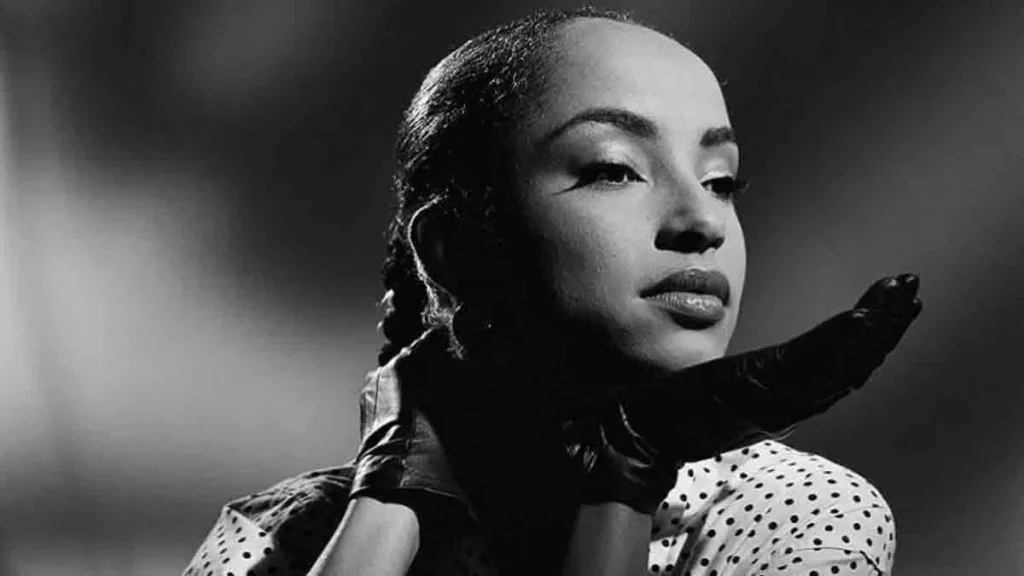
Staying in the realm of smouldering romantic atmospherics, let’s turn our gaze towards Sade and her signature hit “The Sweetest Taboo.” The Nigerian-born British singer and her equally stylish collaborators conjured up a lush musical landscape of gently percolating polyrhythms, understated jazz-pop instrumentation, and Sade’s incomparably sultry voice riding across the whole empyrean.
The lyrics sketch the scene of a fraught but spiritually transcendent love affair, depicted in Sade’s poetic murmurings and silky melodic embellishments. It’s borderline metaphysical in its evocation of ecstatic sensual rapture juxtaposed against the sobering allusions to crossed boundaries and uncharted intimacies. Suffice to say, this isn’t your standard Reagan-era teenage make-out jam.
Instead, Sade and her bandmates minted a new sonic idiom entirely – unfurling the erotic mystery and cosmopolitan sophistication bubbling beneath the era’s often synthetic pop music veneer. It’s a high-gloss atmospheric seduction cast somewhere between the nocturnal bohemian glam of Sade’s coastal Britain home and the lush, forbidden folk reveries of West Africa. The band’s ability to imbue these global-pop stylings with such daring glimpses of emotional and sexual transcendence rendered “The Sweetest Taboo” an intoxicating breath of fresh pheromone air in 1985.
If Sade was weaving dusky webs of satin and shadow on the R&B scene, Steve Arrington was working with a decidedly more synthetic palette of funk and uncut lust on his standout single “Feel So Real.” As the former drummer for the highly influential Ohio funk collective Slave, Arrington was well versed in the intricacies of greasing rhythmic pocket grooves till they damn near overheated. But this solo effort saw the singer/songwriter pushing his mastery of 80s R&B into some particularly wired territories.
From the cut’s opening synthetic bass throbs and piercing, squelching synthesiser arabesques, Arrington forges the kind of late-night carnal dreamscape best experienced through a smokey haze of atmospheric mood lighting and ample chemical enhancement. His own slinky vocal turn coats the proceedings in a lurid gloss of seductive yearning, as he pits his quivering falsetto runs against that sleekly indefatigable robo-funk propulsion.
It’s one of the quintessential quiet storm documents of the era – the sound of unbridled sensual energies being funnelled into a cool but no less sweaty futuristic context. “Feel So Real” marries gritty human desire and pleasures of the digital variety into a propulsive bit of jack-socket eroticism. Its carnal proto-cyborg seduction was made immensely gratifying through Arrington and his studio collective’s sly finesse and ability to make even the most synthetic backdrops smoulder with undeniable rhythmic lustre.
Vivienne Westwood is one of the icons of our age. Fashion designer, activist, co-creator of punk, global brand and grandmother; a true legend. Her career successfully spanned five decades and her work has influenced millions of people across the world.
For the first and only time, Vivienne Westwood has written a personal memoir, collaborating with award-winning biographer Ian Kelly, to describe the events, people and ideas that have shaped her extraordinary life. Told in all its glamour and glory, and with her unique voice, unexpected perspective and passionate honesty, this is her story.
For a decidedly more grounded and reflective perspective on matters of the heart, we’d be remiss not to honour the Commodores’ immortal 1985 ballad “Nightshift.” Penned as a poignant tribute to the recently departed soul icons Marvin Gaye and Jackie Wilson, the song encapsulates the collective’s abilities to blend timeless song-craft with an understated emotionalism and quiet wisdom.
The velvety rich harmonies glide and entwine with an effortless grace, creating an aura of solemnity without reducing the proceedings into maudlin sentimentality. The lyrics offer simple acknowledgements and gratitude to two titans of Black American music, all rendered with a subtle but unmistakable sense of profound reverence. Even in the heights of the 80s pop music spectacle, the Commodores retained their old-school sensibilities for investing even the most straightforward compositions with a tasteful, elegant soulfulness.
“Nightshift” ebbs and flows as a gorgeously restrained tone poem, allowing singers Lionel Richie, Walter Orange, and the rest to luxuriate in gentle melodic exchanges and call-and-response refrains that exude an understated mastery of R&B’s most sacred vocal traditions and performance hallmarks. It’s a balm and reassuring musical embrace for the grieving soul – healing through the salve of sweet, communal voices uplifted in service of honouring departed icons. As if the collective velvet harmonic massage could assuage any residual heartache through sheer conviction and the irrepressible life force of song.

That celebratory vitality and affirming sense of groove-induced communal catharsis abounded on Kool & the Gang’s timeless hit “Cherish.” This gloriously effervescent slice of funk/R&B sunshine was a love song custom-forged to detonate the dance floor while reawakening those first ecstatic rushes of head-over-heels romance in even the most jaded of souls.
From Robert “Kool” Bell’s yearning lead vocal to the track’s punch-drunk horn charts and joyous call-and-response vocal arrangements, there’s simply no resisting the ebullient spirit coursing through “Cherish.” The airtight rhythm section creates a vibrant percussive tapestry for the band’s signature intersection of jazz-inflected improvisational skill and old-fashioned pop song-craft to mingle into a sublimely pleasurable union.
More than perhaps any other 1985 single, “Cherish” radiates pure celebratory revelry and unfettered romantic catharsis seamlessly distilled into a singular pop statement. It’s a sparkling, harmonically radiant tonic of a tune – joyfully hymning the universal virtues of loving human connection while also providing the requisite infectious rhythmic fuel to inspire the masses to joyously commune on the dancefloor. A true all-purpose communal jammy delivered with the lightest of soulful touches and perfect pop instincts.

From those feel-good vibes, we transition to considerably more torrid and gothically intense territory with The Cult’s immortal hit “She Sells Sanctuary.” Driven by Billy Duffy’s shimmering, evocative guitar work and Ian Astbury’s sandblasted croon, the track exudes a hard-edged mysticism and prowling, primal lust-worthy of its iconic status.
The very backbone of “Sanctuary” is sheer unadulterated riff worship – anchored by Duffy’s serpentine, minimalist hard-rock motif that’s been permanently etched into the annals of immortal guitar signatures. It’s a gnarly, sinewy bit of aggro six-string snarl that bears the hallmarks of classic proto-metal riffing while still exuding strong overtones of gothic moodiness and chanted mystical allure. Like so many of The Cult’s best studio moments, “Sanctuary” congealed musical strains drawn from transcendent sources both sacrosanct and profane into a seamless, transfixing aural display of black-clad cool.
Underpinning the riff’s hypnotic lurch is a beautifully restrained polyrhythmic shuffle from the band’s locked-in rhythm section, further amplifying the trance-inducing seductive aura. And then you have Astbury’s soaring yet sandpaper-shredded snake charmer vocals, inverting traditional rock machismo and infusing it with vague metaphysical riddles and layers of vaguely menacing romantic intrigue. His central refrain of “The beauty inflicts the sweet immaculate grace” remains one of rock’s most compellingly occult lyrical koans – a gothic bit of erotic charged wordplay that embodies The Cult’s entire alluring mystique.
In the end, “She Sells Sanctuary” stands as one of those rare rock compositions where the sum impact eclipses any individual component parts. Like all great occult art, the true essence of its power can only be experienced once you fully surrender and allow the piece to wash over your synapses with its carefully assembled psychic residue. It’s meticulously designed to intoxicate and transport, plain and simple. Which likely explains its enduring status as a fan favourite and FM radio staple – despite its murky undertones and resistance to easy mainstream palatability. When articulated with such mystical precision and menacing seductive energy, the rock realm’s darker, more unseemly energies become impossible to resist.

On the complete other end of the musical spectrum lies Elton John’s shimmering 1985 single “Nikita.” The pop legend’s stirring Cold War-themed ode to forbidden attraction and star-crossed love behind the Iron Curtain came parked in lush, cinematic production flourishes and a melody seemingly engineered to pierce even the flintiest of heartstrings.
Over a galloping synthetic pulse and chiming piano refrains, John’s iconic rasp emoted with the utmost wistful yearning as he fleshed out his romantic tale of shadowy espionage and East/West passion. Naturally, the conceit of being hopelessly smitten with an enigmatic female Soviet defector carried ample opportunities for gauzy, baroque melodrama. But John’s inherently empathetic song-craft endowed the premise with a palpable relatability beyond its initial high-concept inspirations.
The lyrics may have been riddled with nods to spy games and covert trysts across the world’s great socio-political divides. Yet at its core, “Nikita” was simply an immaculately crafted pop gem exploring the quixotic longing that underpins all affairs of star-crossed love. It reached deep down into the fundamental human condition to find genuine introspective substance to underscore all the period window dressing and lush musical accoutrements.
Always the consummate professional songsmith, John invested the tune’s sturdy melodic core and cascading piano signatures with a sense of timeless romanticism that elevated the rather fantastical premise into a resonant emotional truth. “Nikita” wasn’t just escapist pop fantasy – it was an artful examination of the deeply relatable sensations of infatuation, projecting desire upon the unattainable, and love’s endless capacity to push beyond our self-imposed boundaries. All couched in the sort of elegantly sweeping pop bombast that made Elton an absolute master of his craft.
On a warm July evening in 1985, a middle-aged man stood on the pavement of a busy avenue in the heart of Moscow, holding a plastic carrier bag. In his grey suit and tie, he looked like any other Soviet citizen. The bag alone was mildly conspicuous, printed with the red logo of Safeway, the British supermarket.
The man was a spy. A senior KGB officer, for more than a decade he had supplied his British spymasters with a stream of priceless secrets from deep within the Soviet intelligence machine. No spy had done more to damage the KGB. The Safeway bag was a signal: to activate his escape plan to be smuggled out of Soviet Russia. So began one of the boldest and most extraordinary episodes in the history of spying.
Ben Macintyre reveals a tale of espionage, betrayal and raw courage that changed the course of the Cold War forever . . .
We’d be remiss if we didn’t dial things back towards the ecstatic end of the pop spectrum by celebrating Phil Collins’ massive hit “Take Me Home.” While the British songwriter had already cemented his mastery of morose introspection and pained romantic meditation, this joyously upbeat single from his iconic No Jacket Required album showcased his knack for capturing the universal spirit of celebration and communal catharsis through the pop song idiom.
Riding a slick, Motown-inspired pocket groove, punching horns, and a decidedly buoyant melody, “Take Me Home” captured Collins at his most ebullient and anthemic. The lyrics eschewed heavy psychodrama in favour of straightforward affirmations of global unity, the ecstatic power of music to transcend cultural barriers, and an urgent summons to kick off the proverbial chains and just surrender to the groove.
For all his ability to exquisitely chart the inner contours of complicated hearts in solitude, this song found Collins in the divine pocket of stadium-levelling master showmanship. You can practically envision throngs of voices uplifted in rapturous singalongs, arms akimbo and spines tingling in celebratory reverie as Collins hammers home the insistent melodic refrains with his signature sandpaper rasp and percussive backbone. The man understood his innate abilities to serve as a high priest of pop, guiding the masses towards moments of euphoric release, and “Take Me Home” distils so much of that soulful populist mystique.
In its soaring melodies, intoxicating rhythmic drive, and uplifting thematic insistence on the healing powers of unity, “Take Me Home” reminds us why Collins reigned as one of 1985’s absolute dons of emotional resonance. He could devastate with tales of romantic discord and shattered psyches. But he could also elevate his audiences towards the celestial rafters of ecstatic abandon and make you feel the pangs of spiritual rejuvenation and shared humanity in every fibre of your being. That ability to conjure the sublime made him not just a pop star, but a cultural totem of seemingly boundless musical mystique and empathic reach.
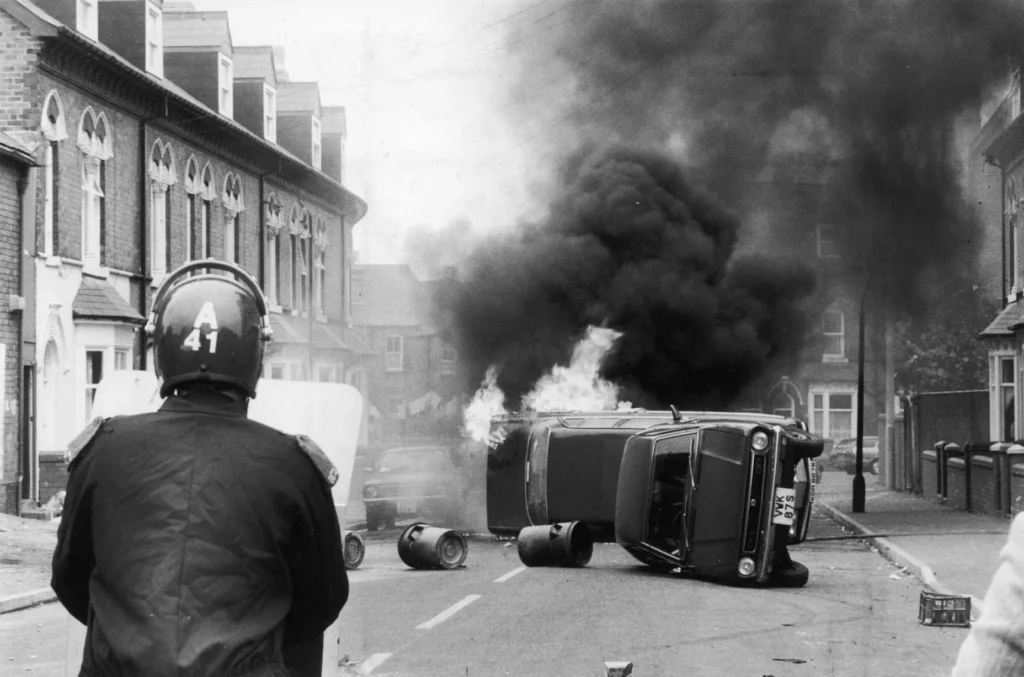
While Collins channelled his shamanistic skills into radiating beams of uplifting pop catharsis, some of his contemporaries like the infamously provocative band Frankie Goes to Hollywood were angling to trigger far more transgressive sensations with their work. The group’s colossal hit “Welcome to the Pleasuredome” heralded the arrival of a deliciously perverse new creative force on the pop scene.
From its opening fuzz-drenched synthetic fanfare, the track oozed a distinctly louche and lurid aura – with Trevor Horn’s notoriously over-the-top production stylings giving deliriously kaleidoscopic life to the group’s overarching obsession with debauchery, camp, and prancing gleefully over society’s prescribed boundaries regarding taste and propriety.
The song wasted little time in establishing its fiery mission of pure unrepentant hedonism with singer Holly Johnson’s snarling, androgyne croons fixating early and often on imagery of ferocious corporeal appetites and anarchic, orgiastic compulsions. Lines like “no-one on the road, they’re gonna rough-ride the freeways” and “heaven in here, gates of Mars and Venus” exuded an aura of amped, Dionysian revelry distilled into blissful industrial-funk textures. It was pure libidinal bacchanalia. Just the sort of potent, provocation that titillated and appalled the pop establishment in equal measure.
Still, for all its radioactive irreverence and gonad-prodding synthetic bounce, “Welcome to the Pleasuredome” remains endlessly listenable – thanks in no small part to the band’s keen instincts for exquisitely rendered pop dynamics and seductive rhythmic science. This ain’t just empty provocation, they seemed to wink – it’s subversive genius filtered through the language of undeniable visceral seduction. By the time the song’s final androgynous yelps and undulating waves of sleaze euphoria crest, you’ll have surrendered any lingering self-control as a worthwhile sacrifice to the gleaming new pop demigods at the altar. Welcome to the pleasuredome, indeed.

Offering some balm and reflective respite from the salacious Frankie overload, we turn to the silky cool of one of soul music’s most iconic couples, Ashford & Simpson. The husband-and-wife duo’s hit single “Solid” distilled their mastery of understated R&B romance into one smouldering slab of sensual, classy balladry. It showcased their innate ability to charge seemingly straightforward pop fare with undercurrents of adult intimacy and nuanced emotional depth.
Nick Ashford’s warm and utterly disarming lead vocals conveyed a sense of gentle, immutable devotion that instantly established a deep, grounded sense of trust between performer and listener. As his verses spilled out with ineffable mellifluous grace over the pillowy, elegantly appointed backing track, the lyrics cast a powerful subtextual spell of romantic reassurance and hard-earned vulnerability.
And then when Valerie Simpson’s featherlight harmonies entwine in sublime interlocking affirmation, the whole track ascends into the ether of sonic revelry designed to melt even the most jaded pop cynic. Nothing peddling in gaudy flash or overt emotionalism – just the restrained caress of two supremely gifted vocalists/composers exuding the radiant essence of true partnership and empathic intimacy. “Solid” shines as a sublime reminder of soul music’s power to capture the intricacy of adult romance without need for empty provocations or melodramatic gimmickry. Just two vessels of supreme spirit and craft consecrating their hallowed union through sound.
Speaking of iconic musical unions, we’d be sleeping on the job if we didn’t pay tribute to the immortal Live Aid.
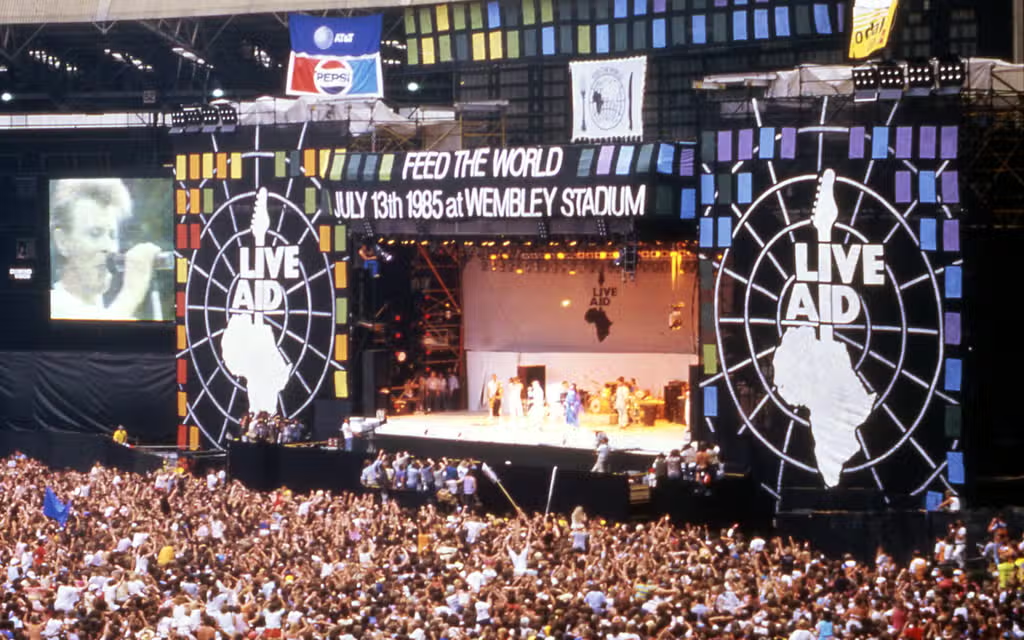
We can’t let this retrospective pass without honouring one of 1985’s most delightfully unexpected team-ups – the iconic David Bowie and Mick Jagger collaboration on their rousing cover of “Dancing in the Street.”
Released in conjunction with that year’s historic Live Aid concerts benefitting Ethiopian famine relief, the track found the two rock legends gleefully indulging in some rabble-rousing call-and-response showmanship over an infectious slice of revamped Motown soul/funk exuberance. From the opening processed drum flourishes and squawking synth embellishments, it’s clear we’ve entered a very specific slice of 80s pop maximalism.
Yet what could have easily devolved into an overproduced trifle in less capable hands is elevated into a genuinely joyous, life-affirming celebration by the sheer wattage of star power and charisma on display. Bowie and Jagger commit to the moment with admirable gusto, camp showmanship dialled up to delirious levels as they holler exhortations to kick off the proverbial footwear and get those toes tapping in the streets.
What makes the track so enduringly infectious isn’t just the bulletproof groove and abundance of hook-laden singalong melodies – though those elements certainly don’t hurt. It’s the unmistakable sense of two titans absolutely relishing the opportunity to indulge in a spot of utterly shameless revelry in service of a good cause. Their playful interpersonal chemistry and theatrical vocal exchanges fairly radiate a “screw it, let’s put on a show” level of enthusiastic mugging that’s impossible to resist.
Much like their iconic predecessor “Dancing in the Street” reinvigorated the Motown sound for a new generation in the 1960s, this uber-theatrical 80s update served as a clarion call for collective jubilation in the name of charity. Bowie and Jagger weren’t preaching topical politics. They were reminding us of pop’s universal power to unite people across divides through the simple language of unbridled physical expression and shameless ear-worming melodies.
This commitment to manifesting sheer ecstatic delight through the power of their combined gravitational pull ensured “Dancing in the Street” would persist as more than just a curio or ephemeral relic. It captured lightning in a bottle – fusing the unmistakable charisma of its two generational icons with the giddy ethos of a pop song constructed for no higher purpose than to bring people together and spur movement, in every conceivable sense of the word. A delicious trifle, to be sure. But one to be treasured for its undeniable skill in mass seduction through song-craft and theatrical verve.
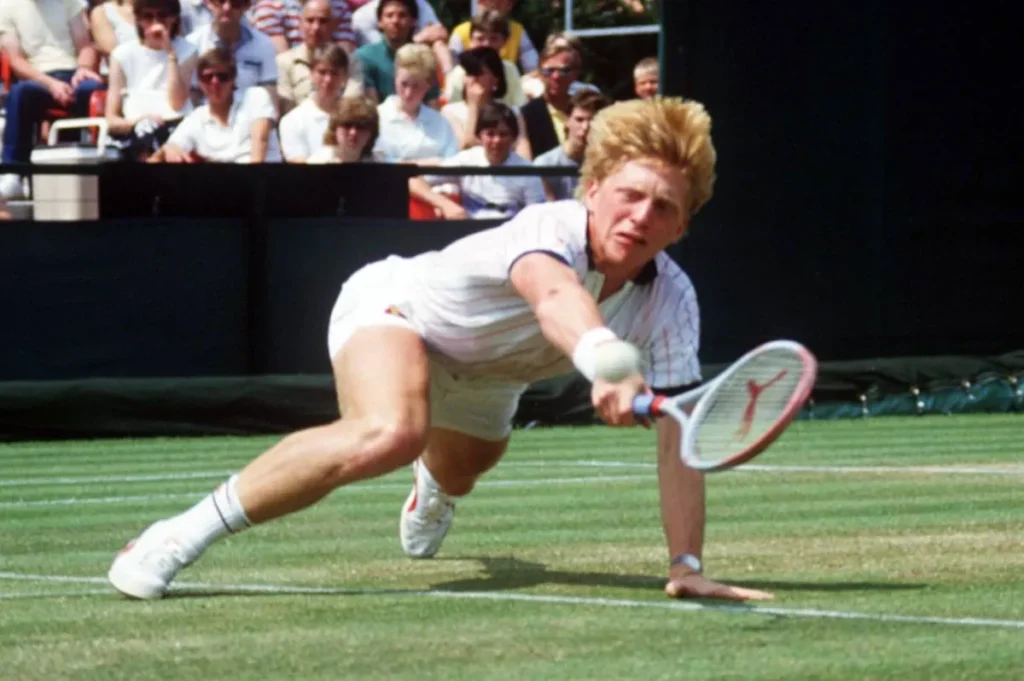
Keeping the good vibrations rolling, we’d be remiss not to celebrate UB40’s inspired reggae-pop spin on the 1970s soul staple “Don’t Break My Heart.” With their buoyantly skanking grooves, lustrous harmonies, and the rich rasp of Ali Campbell’s unmistakable vocals, the British collective reanimated the track into a warm affirmation of romance’s healing powers and simple pleasures.
More than just a routine cover, UB40’s rendition captured all the emotional resonance of the original while managing to blaze its own unique path through stylistic adventurism and lush, neo-Caribbean atmospherics. The languid yet insistent pulse of the grooves and playful dialogue between lead vocals and horn charts conjured vivid sonic dreamscapes of sun-kissed tropical shores and swaying palm trees. This was make-out music engineered for sultry late-night clinches and breezy, moonlight catharsis.
And yet it retained a humble, grounded simplicity in keeping with the collective’s earnest working-class ethos and aversion to anything veering towards grandiose pretence. More than just a nostalgia exercise or opportunistic crossover bid, “Don’t Break My Heart” embodied UB40’s mastery of transforming wispy pop trifles into emotive, spiritually enriching experiences through the deceptively powerful conduits of groove science and vocal conviction.
Coming from a crew who already possessed albums worth of soulful meditations on poverty, inequality, and institutionalised oppression, their ability to wring transcendent intimacies from something as ostensibly trite as a standard-issue radio soul nugget felt nothing short of revelatory. Like pop’s versions of mystic shamans, UB40 instinctively grasped the power of elevating simplicity into a kind of spiritual sustenance. Good vibes and empathic deliveries alchemized into an elixir for the masses hungering for genuine human affirmation.

For a comparable immersion into sheer lush atmospheric rapture and romantic idealism rendered through a widescreen pop canvas, we need look no further than the Dream Academy’s immortal hit “Life in a Northern Town.” Driven by gorgeous layers of reverb-washed guitar textures and Nick Laird-Clowes’ distinctively wistful lead vocals, the song unfolds as a swirling fever dream of sublime melancholy and nostalgic remembrance.
Yet for all its understated, almost gauzy production gestures, “Northern Town” proves an incredibly potent melodic affair – replete with insistent vocal hooks, chiming instrumental refrains and a wonderfully anthemic chorus designed to inspire mass audience sing-alongs. It’s among the most elegantly understated yet impact fully rendered purveyors of pop’s universal ability to resonate across emotional and cultural divides.
While the core lyrics and arrangements hardly betray anything excessively complex or narratively heady on paper, therein lies the magic of the Dream Academy’s ineffable appeal. With the most gossamer instrumental touches and deceptively simple incantations to memory and perseverance, the band conjures whole galaxies of profound emotion and rapturous longing. Like the finest sculptors, they whittle away any extraneous debris to fashion a song of resounding clarity and concision – a vessel through which all the most turbulent human undercurrents of love, loss and determination can travel unimpeded.
It’s no wonder the track became an instant ubiquity on radio in 1985 and an enduring staple of discerning pop appreciation societies. You don’t just hear “Life in a Northern Town” – you feel its wisdom and its lure seeping directly into your bloodstream across the span of a few sublime minutes. It’s a sublime emotive spell, disguised as an airy pop confection, that lingers long after the final chords decay into permanent memory.

If the Dream Academy staked their claim to pop immortality through a singular concentration of hushed power and uncanny melodic economy, Dire Straits approached their art from the opposite end of the maximalist grandeur spectrum. The legendary rockers’ epic title track to their Brothers in Arms album represents nothing less than the apex of their cinematic/widescreen inclinations – a veritable rock opera unfolding in real-time over the course of nearly 9 minutes.
Slowly unfurling from an atmospheric bed of synthesised percussion and Mark Knopfler’s trademark arid guitar strums, the tune steadily builds through movements of escalating harmonic and narrative gravity. Characters and vignettes spanning the vast scope of human conflict seemingly bleed across the soundscape, coalescing into impressionist motifs of warfare and global unrest.
With each verse cycle and instrumental progression ushering in fresh sonic textures and lyrical complexities, the song conjures increasingly vivid panoramas of grim battlefields and war-torn landscapes. And always at the core resides Knopfler’s parched yet curiously melodic vocal incantations – like some seasoned bard ushering the listener between various realms of breathtaking squalor and shocking violence.
In many ways “Brothers in Arms” represents the full realisation of the cinematic and storytelling ambitions first glimpsed on classic Dire Straits epics like “Telegraph Road” and “Industrial Disease.” It’s as if the band couldn’t quite contain their desire to translate the magic of classic rock song-craft into something approaching capital-A Art – blending together mythic visions of human suffering with an undercurrent of pop palatability and sheer musicianship bravura.
They walk an exquisite tightrope here, daring to explore expansive new realms of long-form thematic construction and aural world-building while never completely abandoning their melodic foundation and flair for rendering rousing set pieces designed for mass catharsis. This was a thinking person’s rock scaled up to truly monumental proportions, yet retaining its functional purpose as rollicking, fist-pumping entertainment. An incredible creative high-wire act pulled off with the utmost skill and professional conviction.
In the summer of 1980, ten years after the break-up of the Beatles, John Lennon signed with a new label, ready to record new music for the first time in years. Everyone was awestruck when Lennon dashed off '(Just Like) Starting Over'. Lennon was back in peak form, with his best songwriting since 'Imagine'.
Enriched by exclusive interviews with Lennon's friends and associates, including Paul McCartney, The Last Days of John Lennon is a true-crime drama about two men who changed history. One whose indelible songs enliven our world to this day, and the other who ended the music with five pulls of a trigger.
Transitioning from such sprawling and high-flown creative heights, we come in for a graceful thematic landing courtesy of the silky smooth R&B crooners of D-Train and their underrated 1985 hit “You’re the One for Me.” With pillowy synthesisers, immaculate vocal harmonies and a gently percolating mid-tempo groove, the single represented prime purveyance of the perennially underrated “sweet soul” strain of quiet storm balladry.
Lead singer James Williams II’s effortlessly dulcet croon sits serenely atop the polished, luxurious production – embodying a supreme air of romantic suavity and assuredness. There’s a level of easy confidence, even a certain virility, coursing through his yearning delivery and the evocative pampering of the lush synthetic atmospherics surrounding his assured refrains.
Make no mistake, “You’re the One for Me” is unabashedly a seduction record – designed to cocoon its listener in a sensual haze of opulent melodic and rhythmic comforts. Yet it conducts its courtly pursuit with an unmistakable level of earnest devotion and class that elevates it far above the norm in terms of garden variety slow jam disposability.
Again, we must commend those immaculate harmonies and Wiliams’ ability to imbue even the most seductive lyrical turns with unmistakable shades of sincerity. This was music designed to soundtrack intimate romantic clinches and nocturnal couplings, for certain. But never does the track succumb to mere salacious novelty or vapid sentimentality. There’s true soulful conviction, an unwavering fidelity to the mysteries and spiritual unifications of genuine partnership that D-Train sublimated into their plush melodies and rhythms.
It’s the sort of assured yet humble virtuosity and preternatural groove wisdom that often gets overlooked in conversations around crucial generational R&B talents of the 80s. Yet songs like “You’re the One For Me” endure as lovely reminders of pop’s rare ability to alchemise seemingly rudimentary pleasures into sustaining balms for the spirit. Maybe not the boldest creative statement of 1985, but an immensely satisfying and deeply soulful one in its own right. Sometimes, that’s more than enough to shine forever.

For a more idiosyncratic, left-field spin on romantic pop and songwriting quirks, we’d be remiss not to shout out the enduring cult classic “A New England” by the inimitable Kirsty MacColl. The British songstress delighted in upending the established conventions of the pop song format, warping melodic forms with playful irreverence while still retaining an undercurrent of emotional relatability.
“New England” wanders a distinctly zigzagging path rife with unpredictable meter changes, deadpan melodic feints and brash subversions of standard pop tropes. Yet for all its zig-zagging mischievous form, MacColl’s instincts as a vocalist and arranger ensure the whole eccentric enterprise coheres into that rare pop artefact that’s immediately catchy yet mischievously unconventional.
From the quasi-rap cadences of MacColl’s opening verses to the baroque instrumental flourishes that creep suddenly into each chorus, it’s apparent we’re in the presence of a true creative original determined to wage guerrilla warfare on all notions of palatable pop decorum. Yet the track retains an undeniable streak of melodicism, emotional candour and rhythmic concision buoying it beyond the realms of aimless experimentation.
Lyrically, she filters what amounts to a fairly standard romantic travelogue through a thoroughly defamiliarised lyrical lens – employing vivid turns of phrase and unexpected pockets of absurdist whimsy that continually jolt us from assuming any predictable narrative thread. Much in the same way her vocals and instrumental arrangements delight in zigs where our ears anticipate zags, her word-craft ensures even the most cursory observations come packaged in a disarming, off-kilter slant.
Yet by holding it all together under the unifying canopy of breezy melodic economy and an innate affection for subverting audience expectations, “A New England” emerges as a certifiable pop classic – delighting in both its eccentric creative derring-do and stealth devotion to the idiom’s core tenets of sticky song-craft. Kirsty MacColl stakes out a permanent home for true bohemian eccentricity in the pop universe, daring all those entranced by her skewed charms to find the sublime in the disruptive.
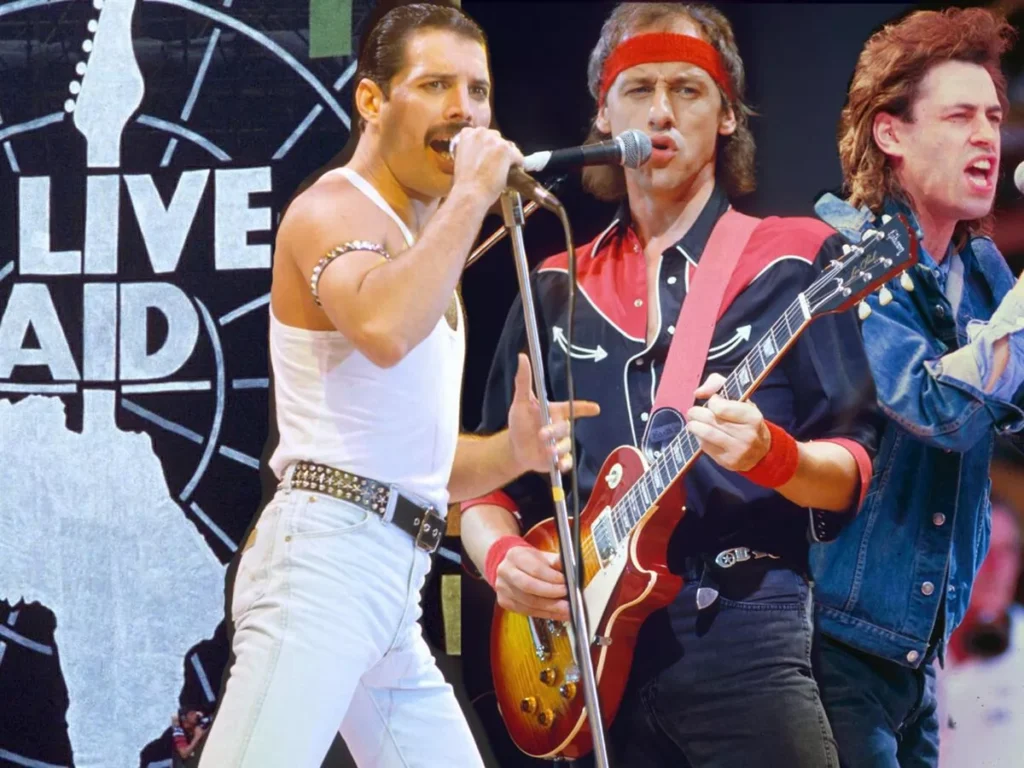
Well, those were certainly some colourful and idiosyncratic portraits we just wandered through, no? From the rapturous communal pop catharsis of Phil Collins’ “Take Me Home” to the gothic mysticism of The Cult’s “She Sells Sanctuary,” we covered an entire universe’s worth of sonic kaleidoscopia this evening.
As we bid adieu to this sprawling musical odyssey through 1985’s lush creative bounties, I’d be remiss if we didn’t take a moment to honour one more masterwork – basking in the luminescent afterglow of Sade’s smouldering quiet storm classic “The Sweetest Taboo.”
Even by that band’s superlative standards of sensual sophistication and rhythmic hypnosis, this track looms in rarefied air. The quintessential lush, pulsing encapsulation of Sade’s uncanny mystique – lending her unmistakable ethereal vocals to swaths of undulating, twilit sonic rapture. It’s like a gateway to a hidden utopia, a languorous, velvety oasis where all our visceral pangs of hunger and subterranean erotic energies can run deliriously unchecked amidst swirling banks of chiming guitar chords and martial polyrhythms calibrated to induce trance-like swaying of the hips.
Yet as we wander forth from this deliriously weird and wonderful sonic journey, the mercurial shape-shifting delights of a-ha’s “Take On Me” linger as the most fitting crescendo. In all its rapturous highs and brain-tickling eccentricities, it encapsulates the sheer artistry, ambition and exuberant joy 1985 unleashed upon the world.
From modest synth beginnings to grandiose operatic resolutions, from fusing clashing impulses to pioneering music video innovations, “Take On Me” was a true watershed – shattering conventions while embracing timeless profundities. A game-changing synthesis of the esoteric and democratic pop vernacular, reflecting the era’s spirit in one impossibly perfect 4-minute prism.
It captured the ambient sheen of emerging technology and timeless romantic melodies. Subversively experimental yet magnetically catchy. Stridently 80s yet transcendent of place and time. As we close our journey across 1985’s vistas, return to its eternally spellbinding radiance one last time.
Yes, ’85 remains pivotal – a moment where mainstream music still aspired for substance and vision over cynicism. A magical window before the shift towards irony as default sensibility. For that brief, intoxicating instant, the biggest hits resonated on a deeper human frequency while still being supremely entertaining and validating life’s grandest reveries. You could dance, muse, rage, dream and transcend. If only for a song’s length, the ideal and everyday merged. It left an indelible, forever vital impact.
David Maher is an English Language and Linguistics lecturer at the University of Economics and Finance (UEF) in Ho Chi Minh City, Vietnam, where he delivers courses for the University of Gloucestershire in the UK. An accomplished author, he writes fiction and historical pieces capturing the zeitgeist of the 1960s, 70s, and 80s – decades he lived through firsthand.
Born in London in 1963, Maher’s formative years witnessed the cultural shifts and societal changes that defined those eras. In the 1980s, he ventured into the entertainment industry, gaining invaluable insights into the world of showbiz. These diverse experiences, coupled with his academic expertise, shape Maher’s unique perspective on language, culture, and historical events.
His background in linguistics provides a scholarly lens to analyse linguistic evolution and how language reflects culture and historical contexts. Meanwhile, his entertainment industry stint offers an insider’s view into how popular culture, arts, and media influenced and were influenced by the zeitgeist. Above all, having come of age through the 60s-80s, Maher experienced the social upheavals, political changes, and generational divides, lending an authentic, boots-on-the-ground perspective to his historical writing.
By synthesising linguistic expertise, cultural immersion, and visceral period understanding, Maher’s writing connects the dots between language, cultural phenomena, and the grand sweep of history. This unique convergence of backgrounds allows him to provide multidimensional, insightful perspectives into the sights, sounds, and sentiments that shaped modern Britain.

